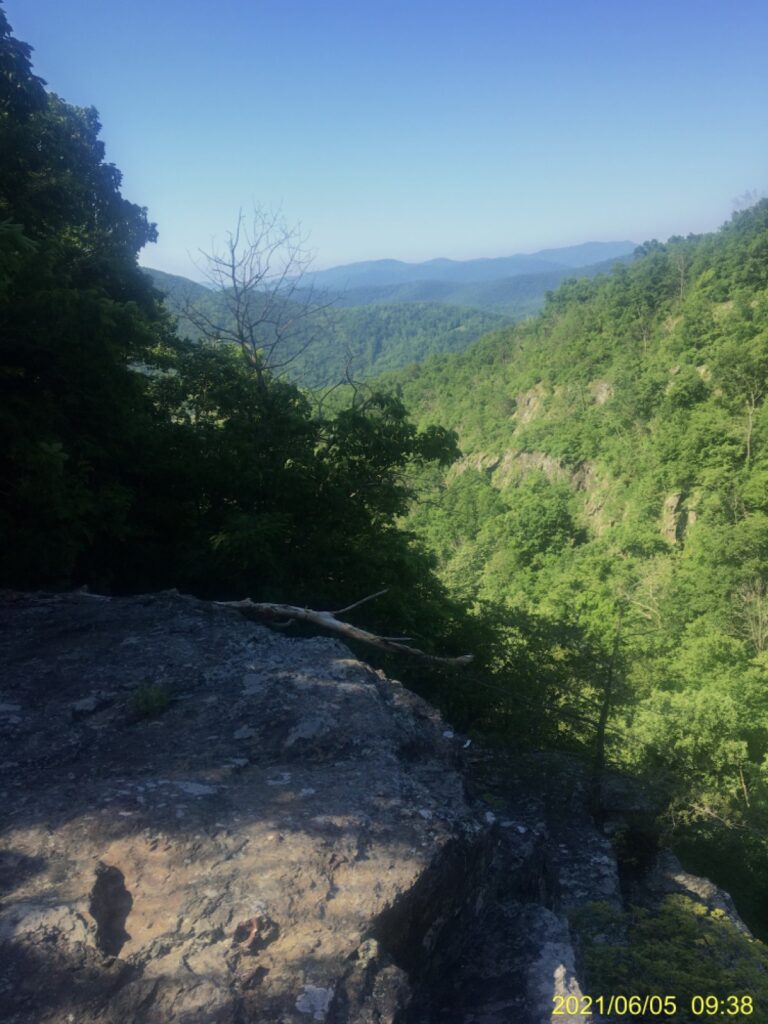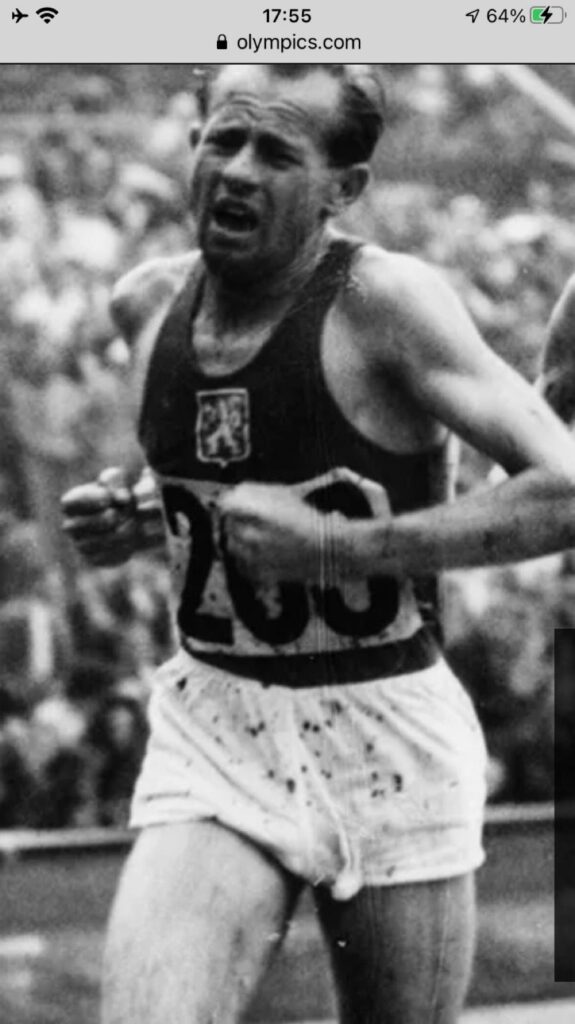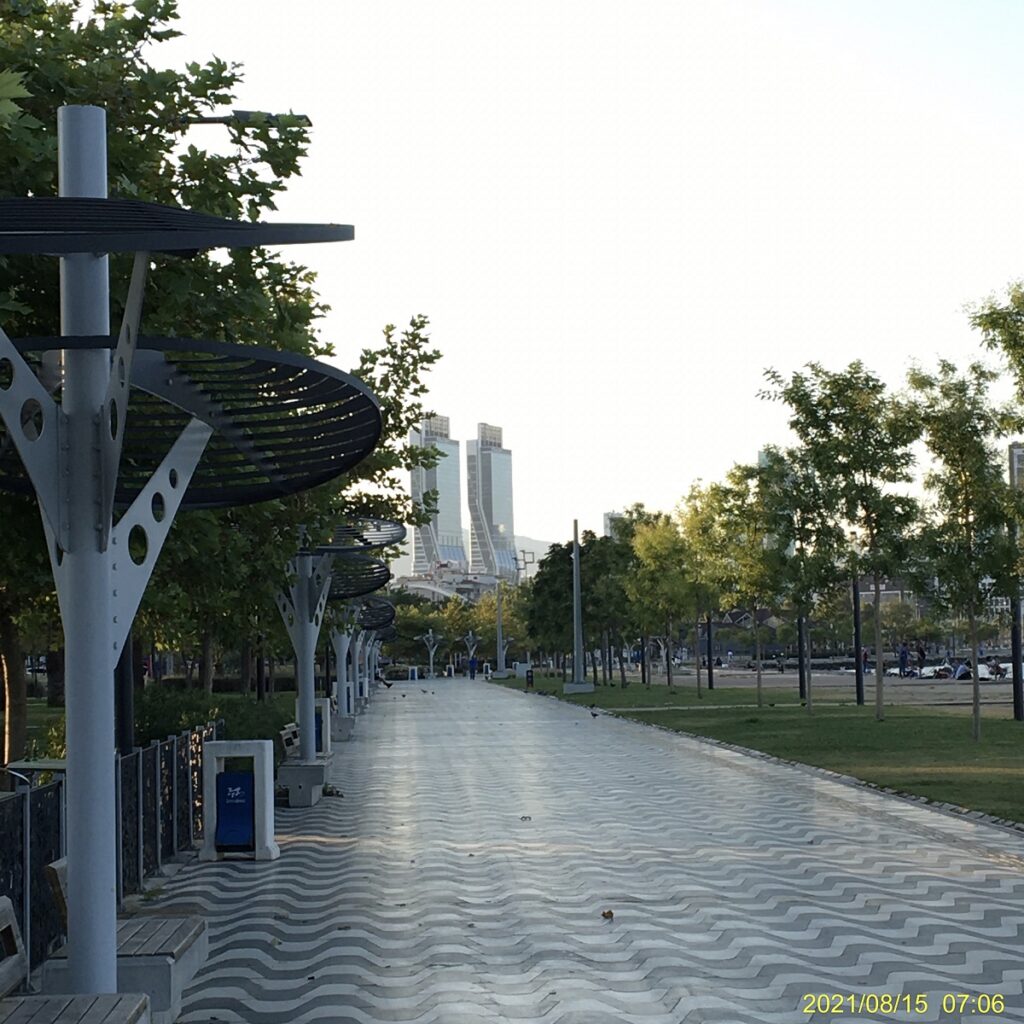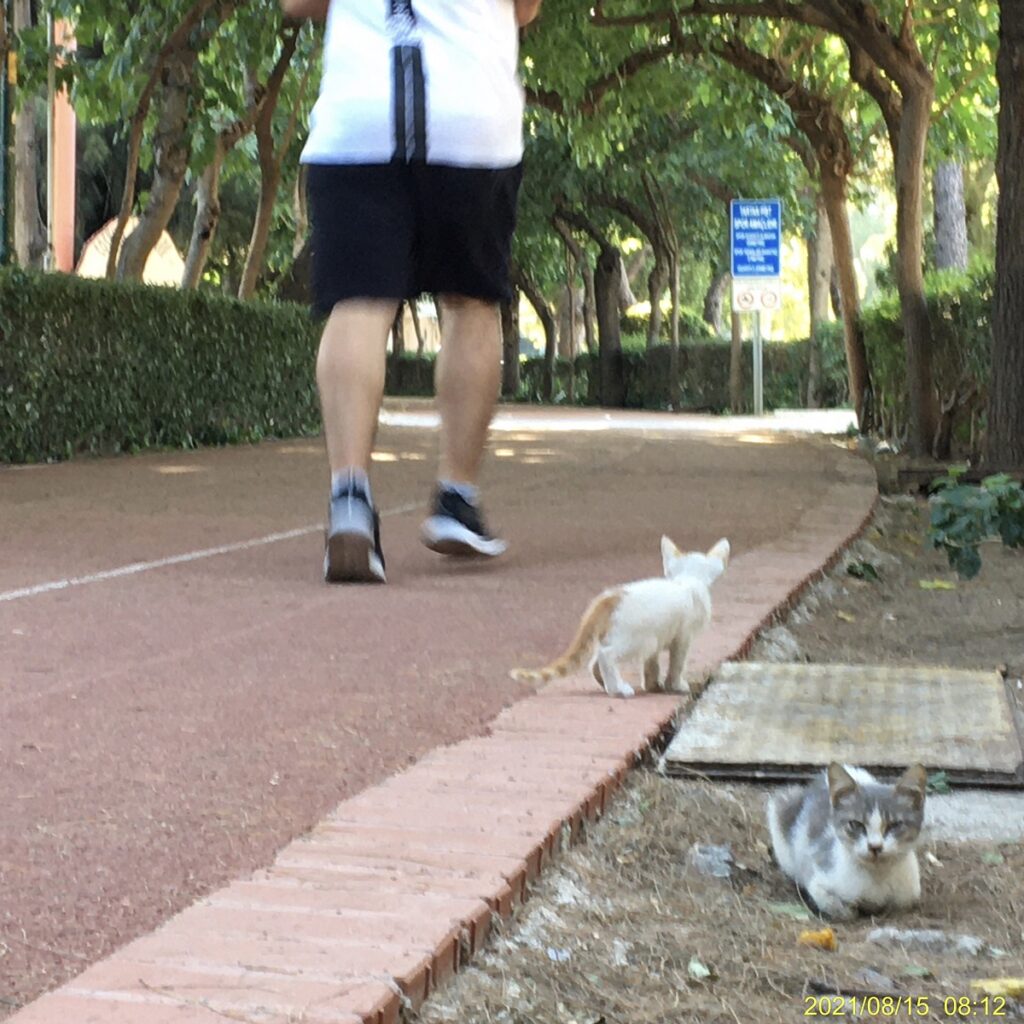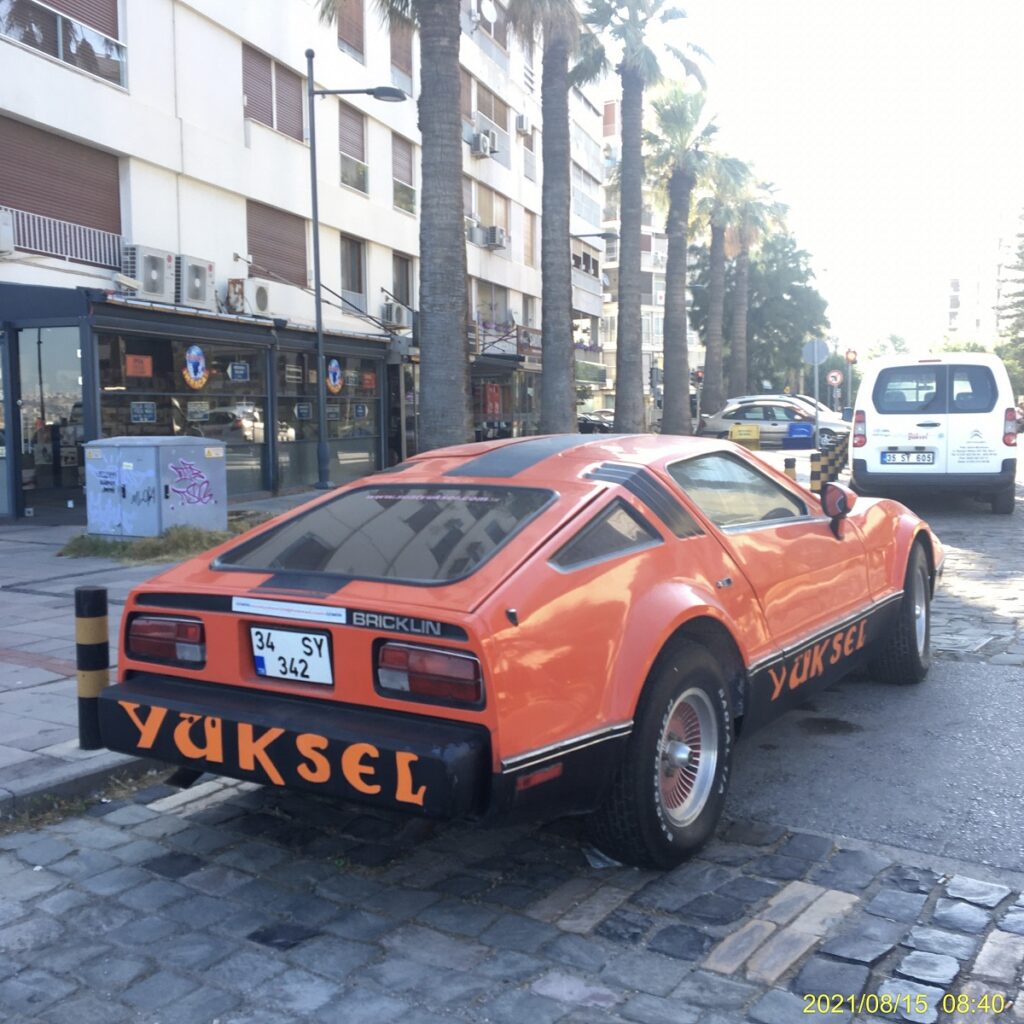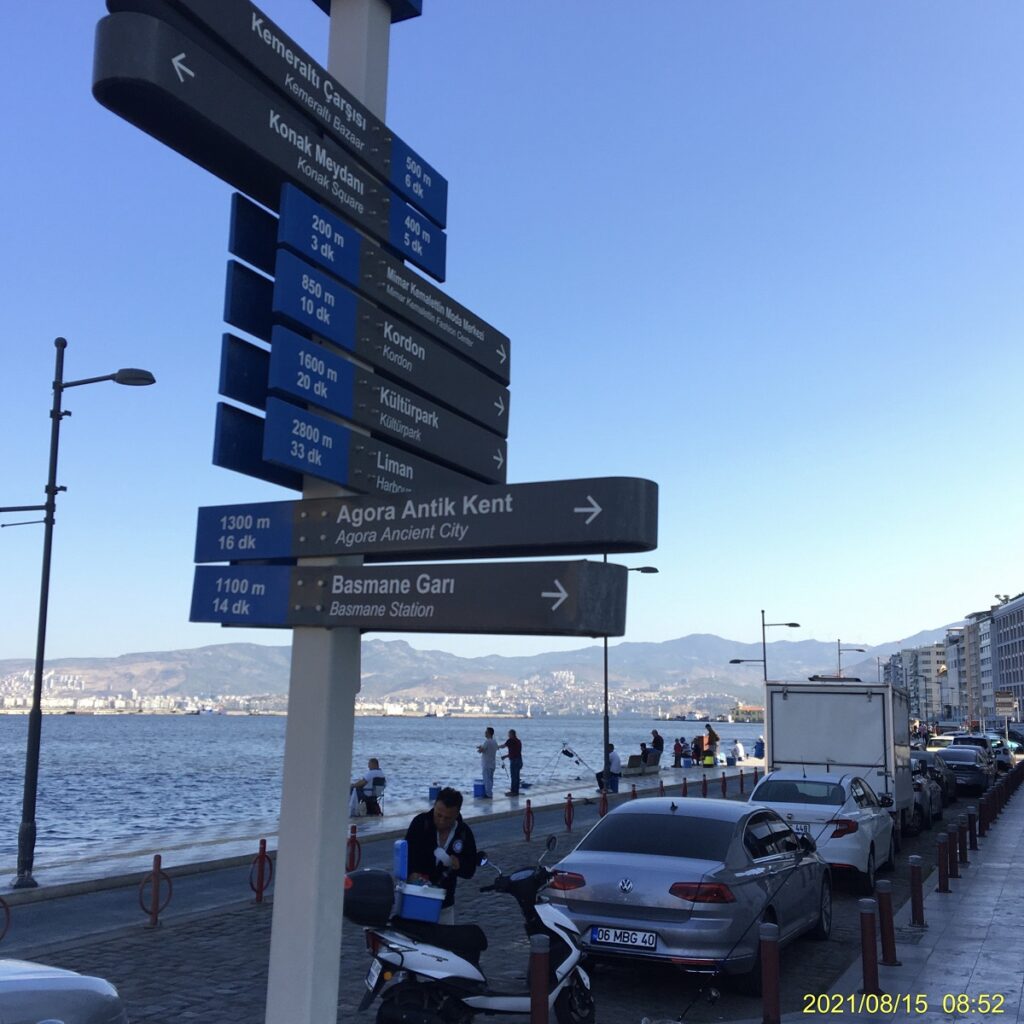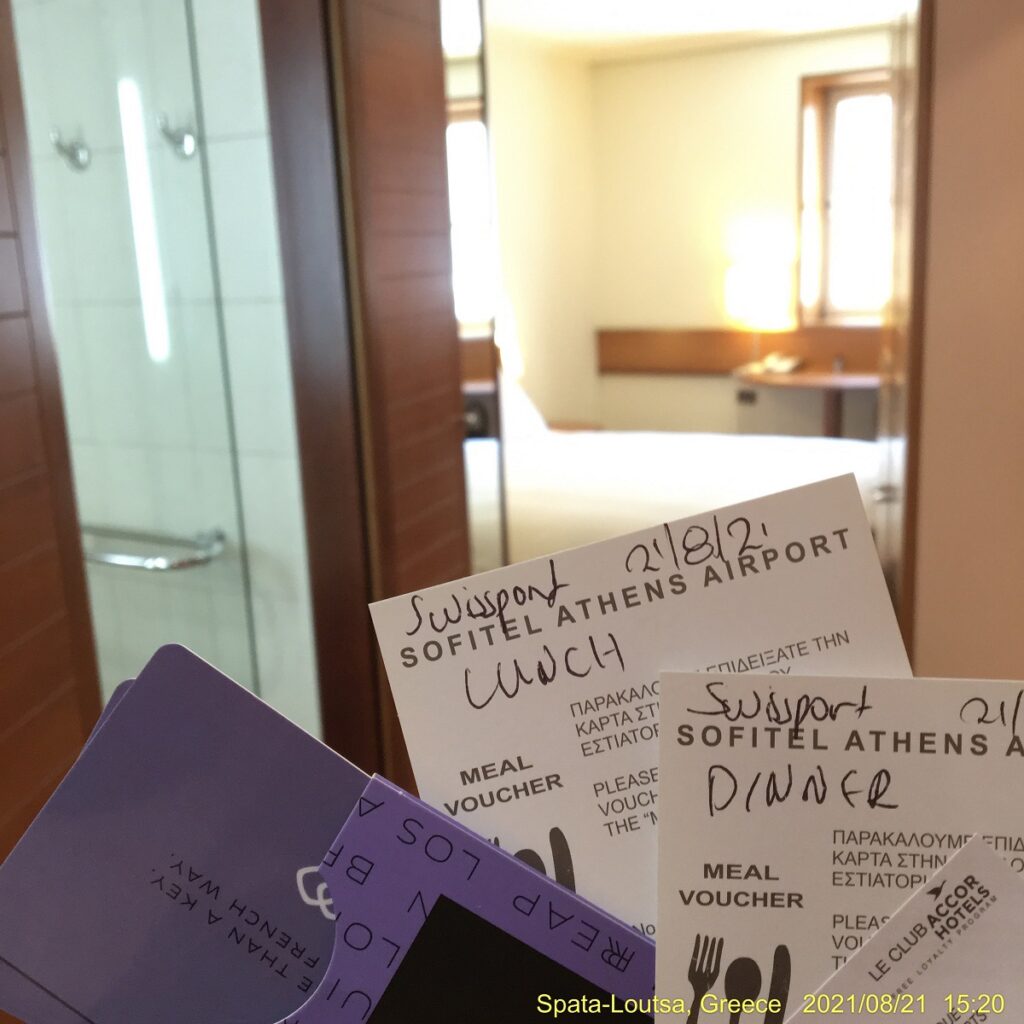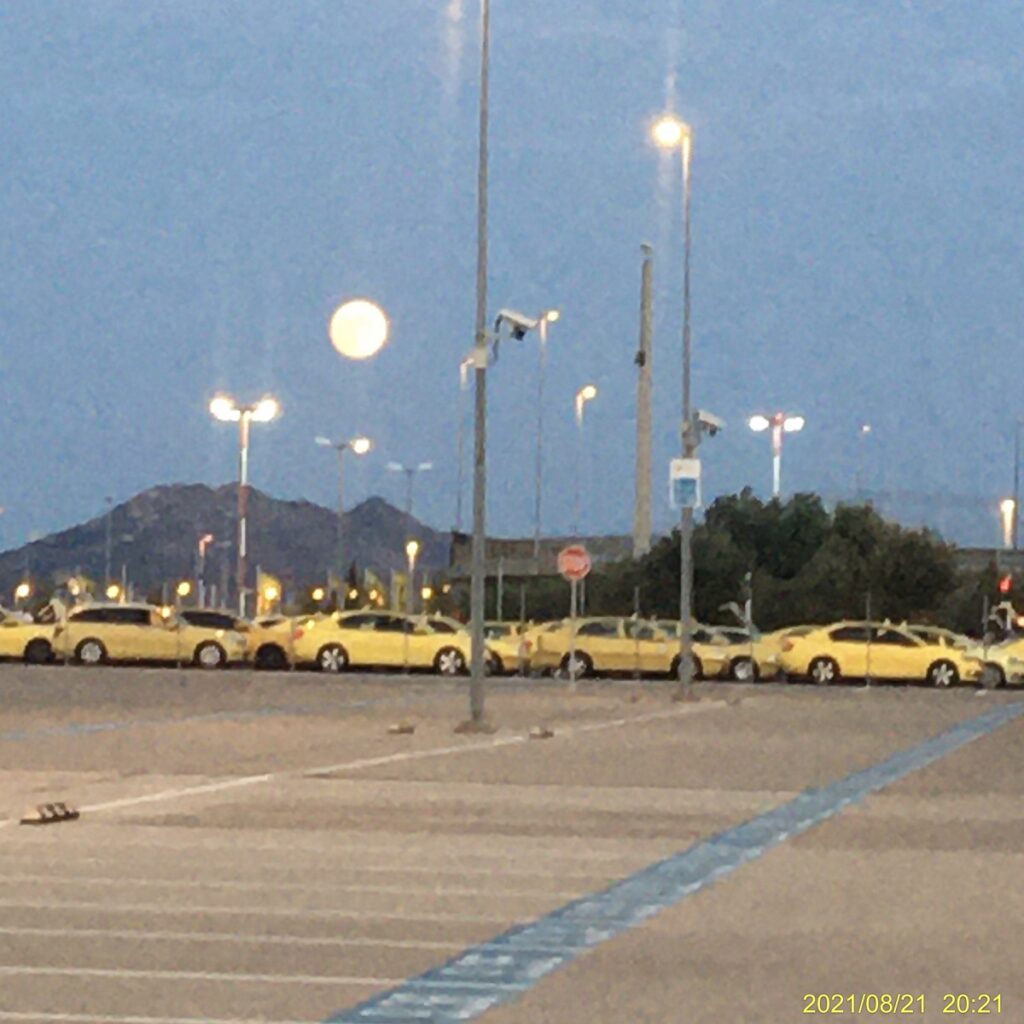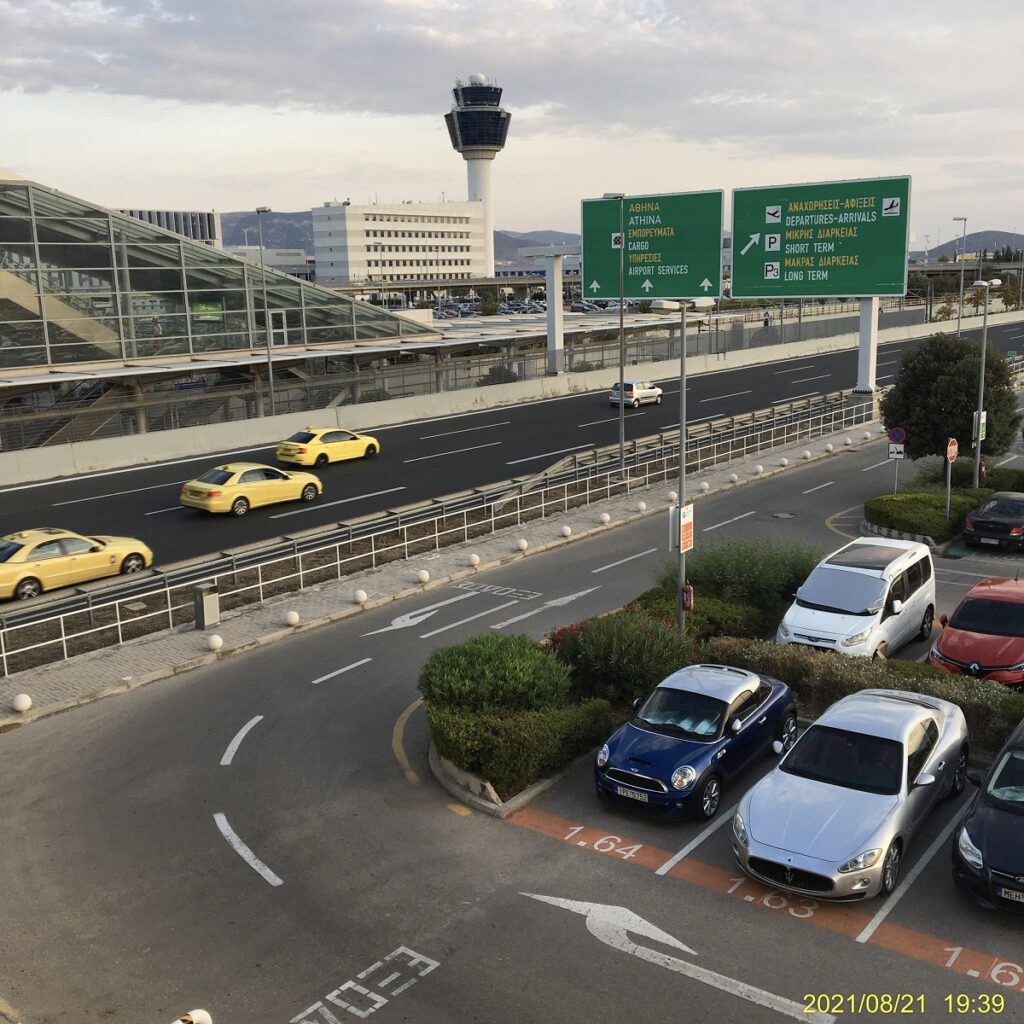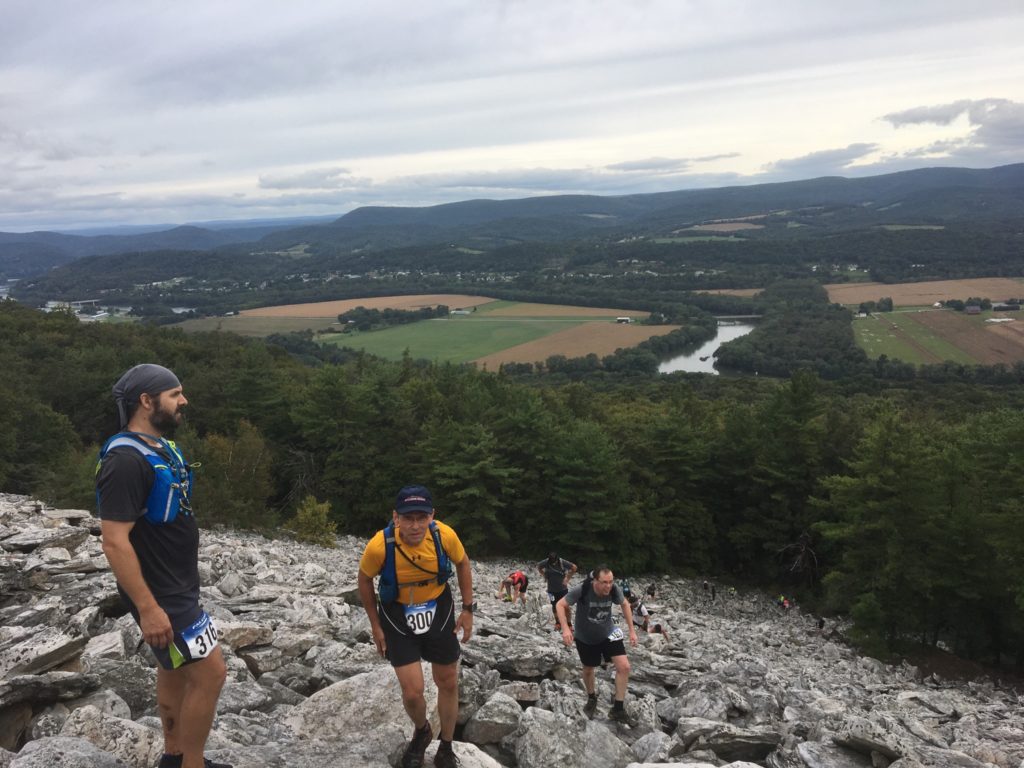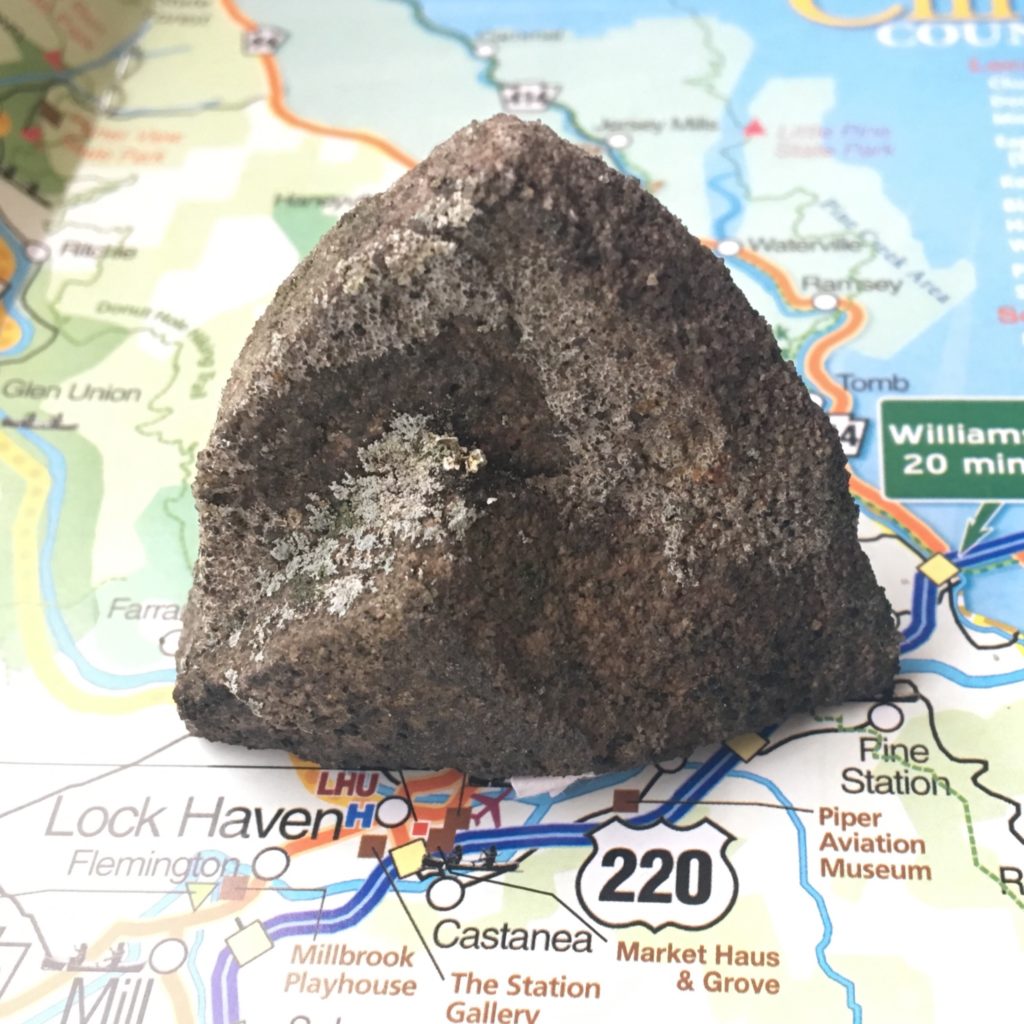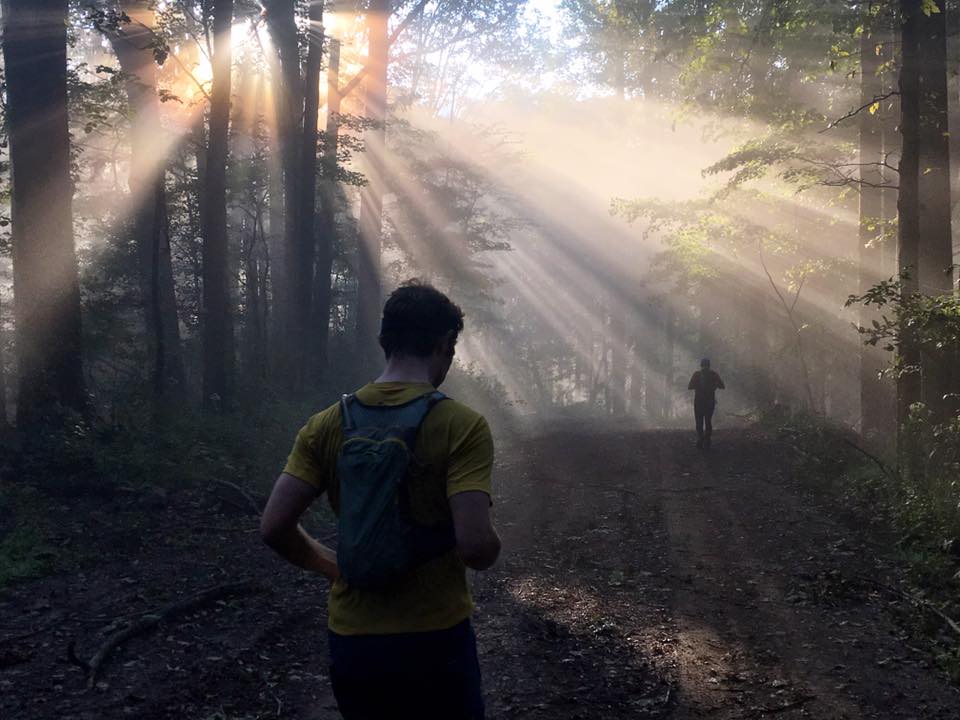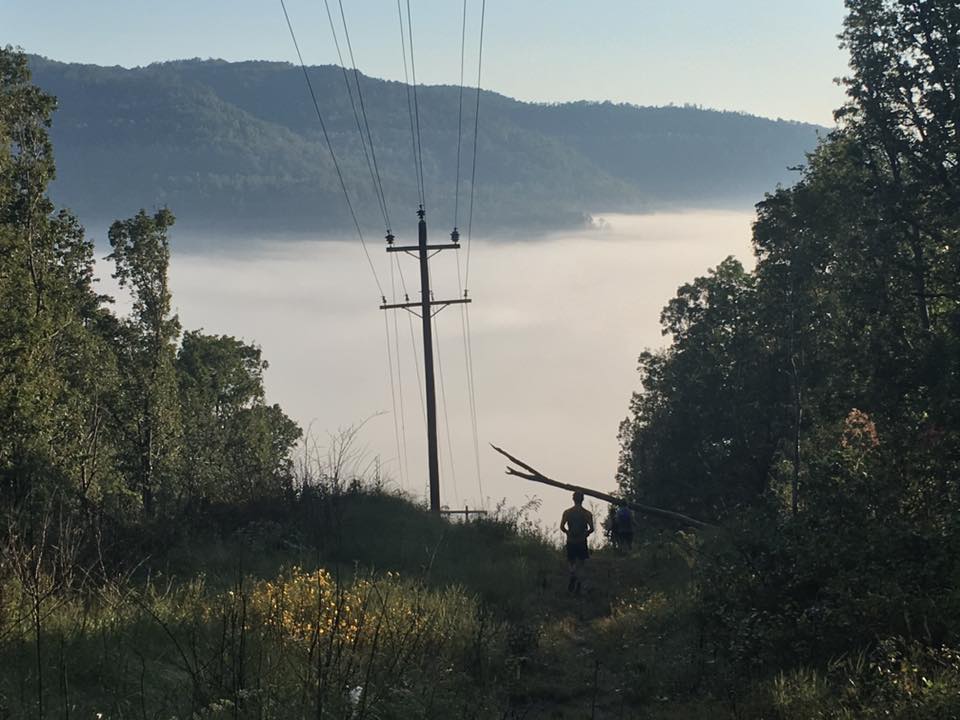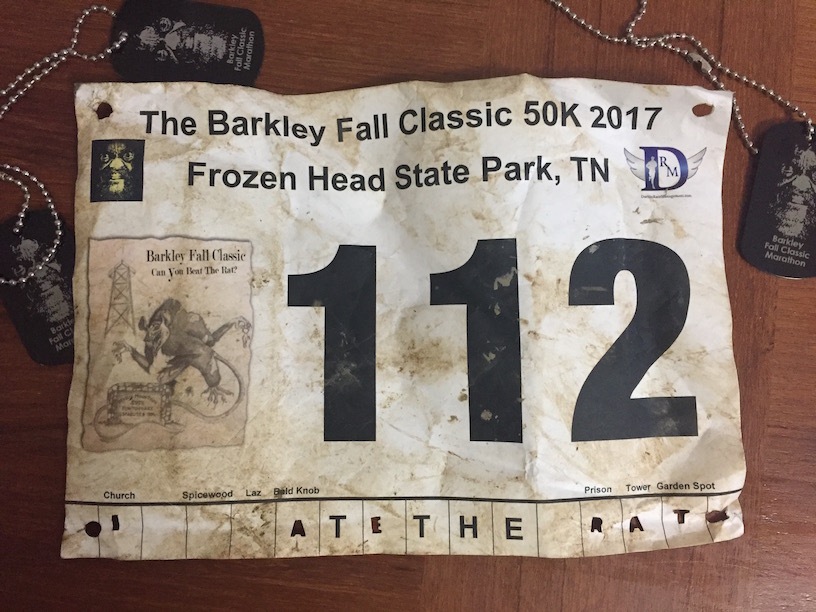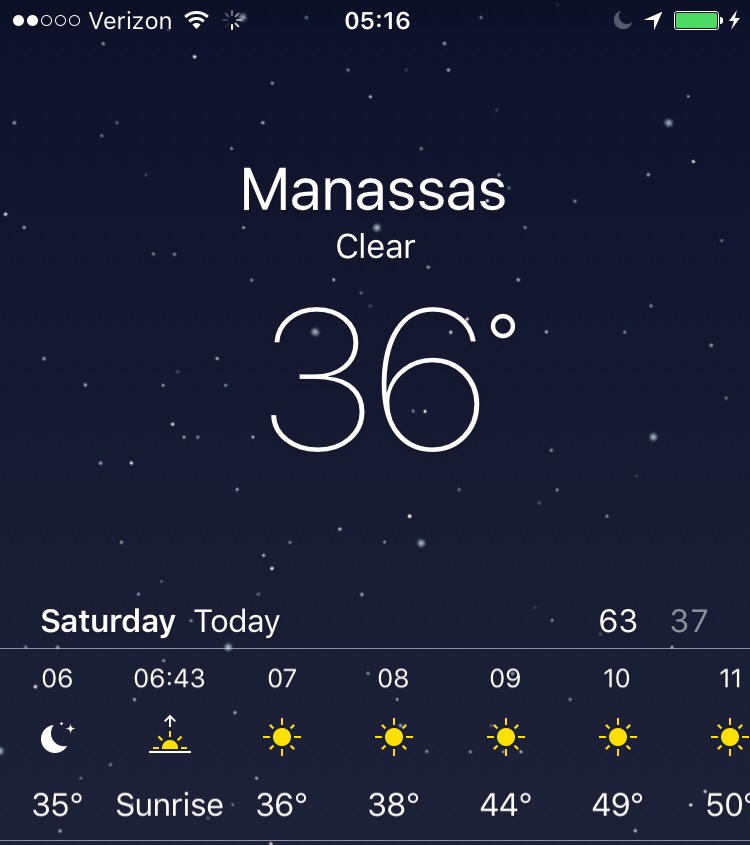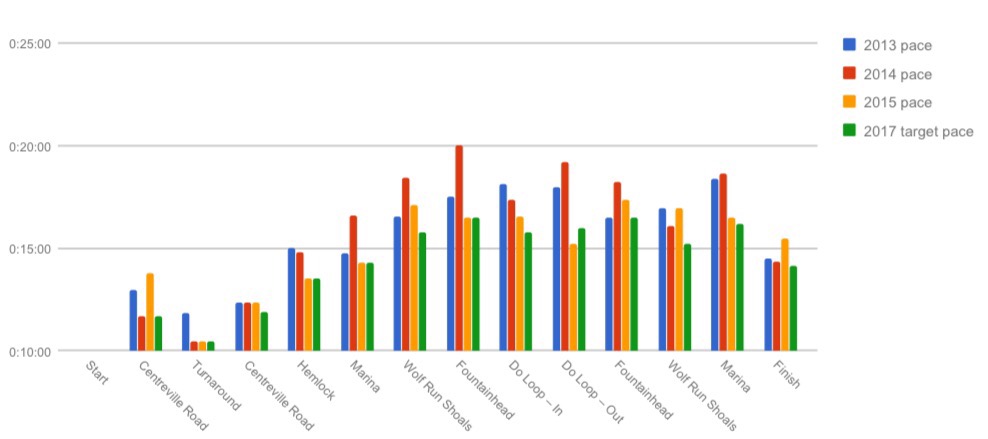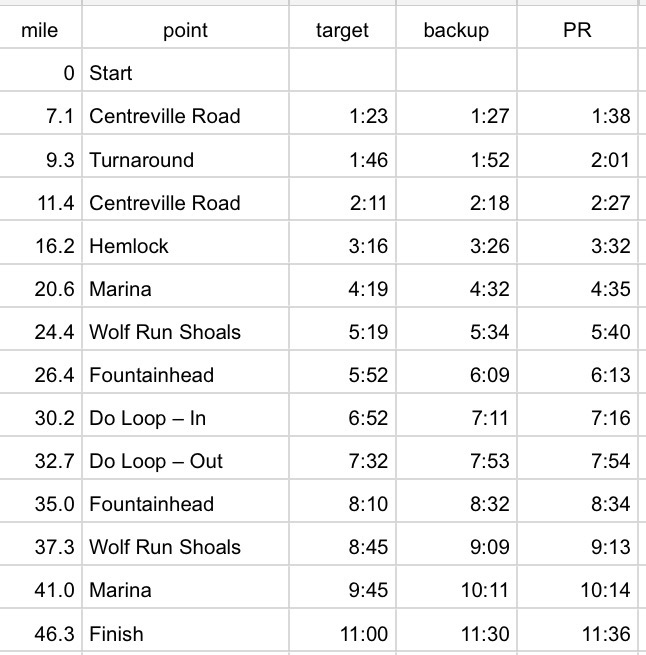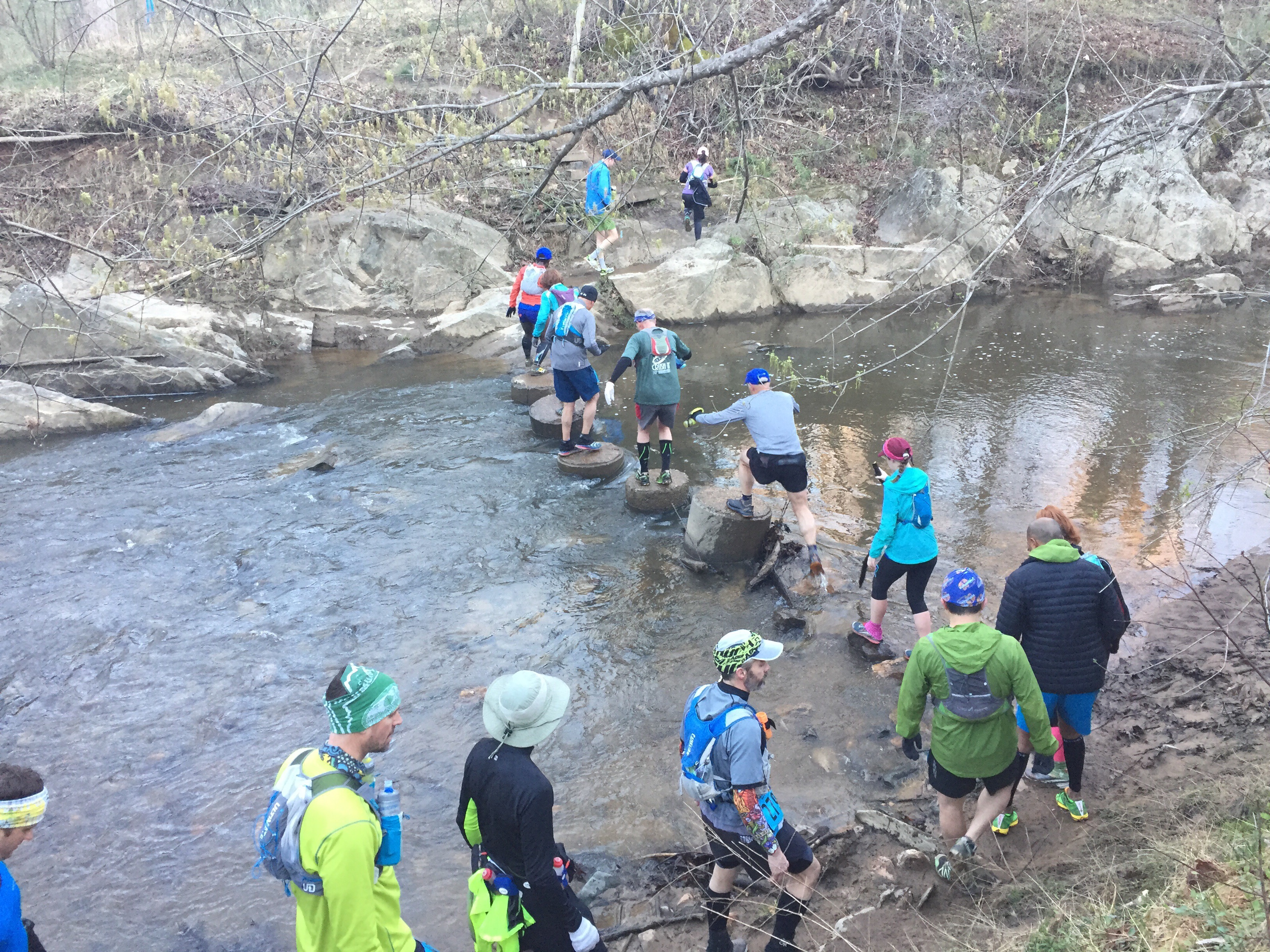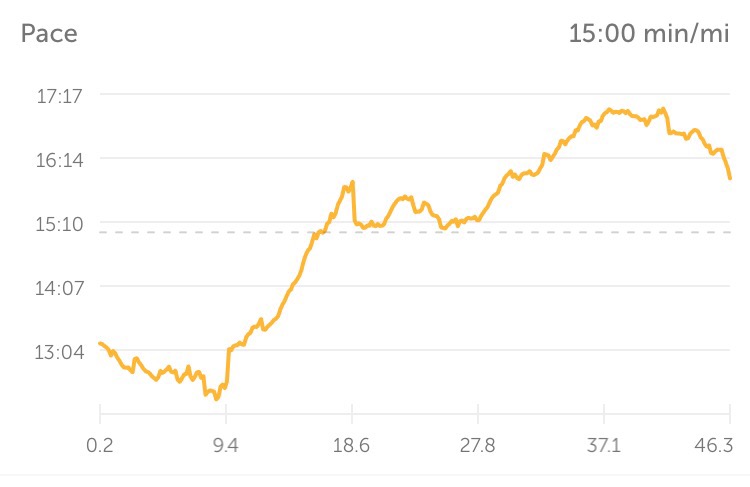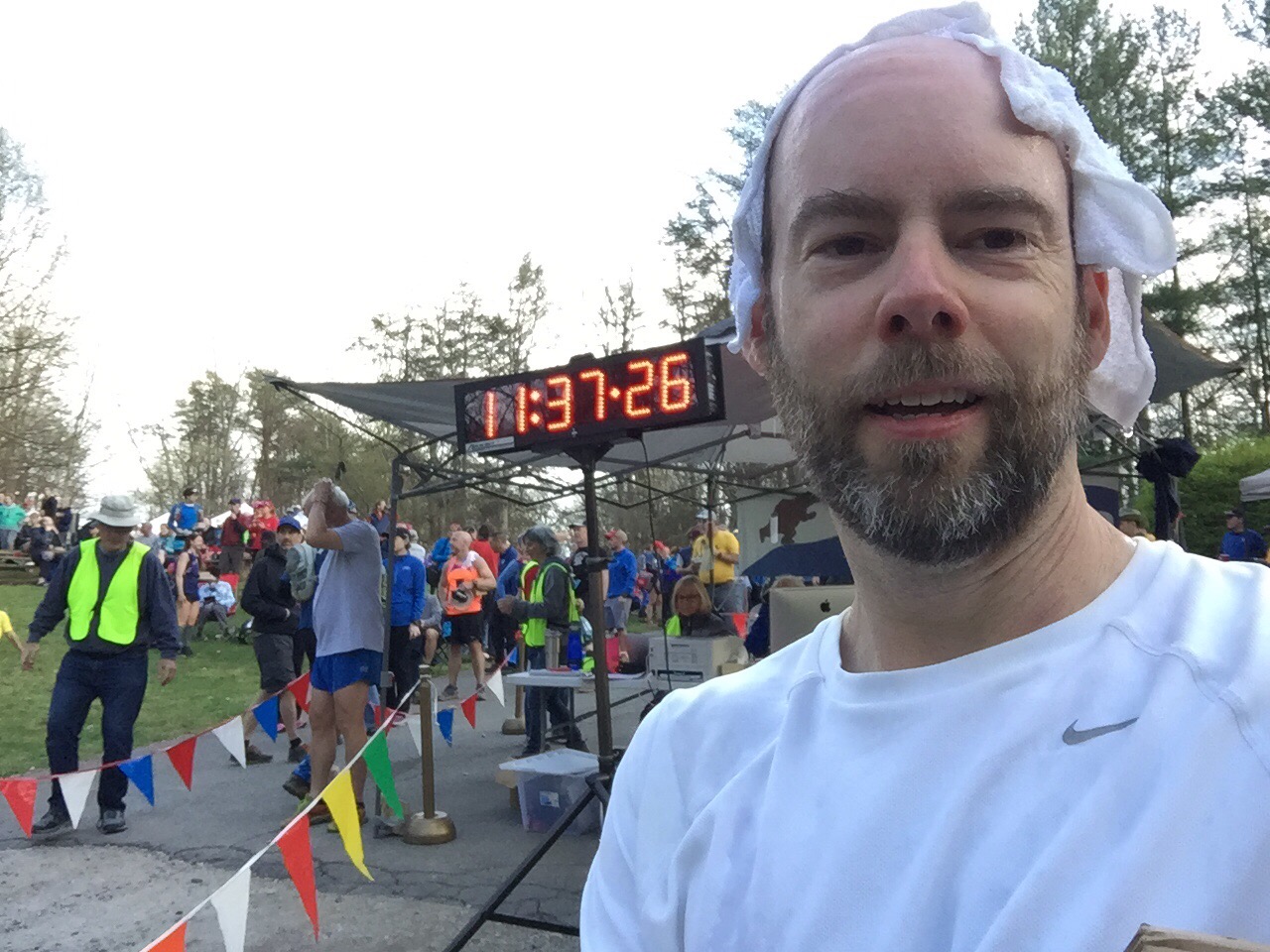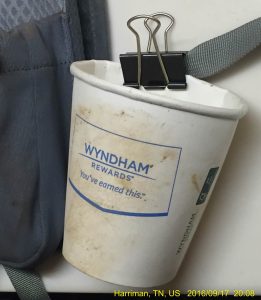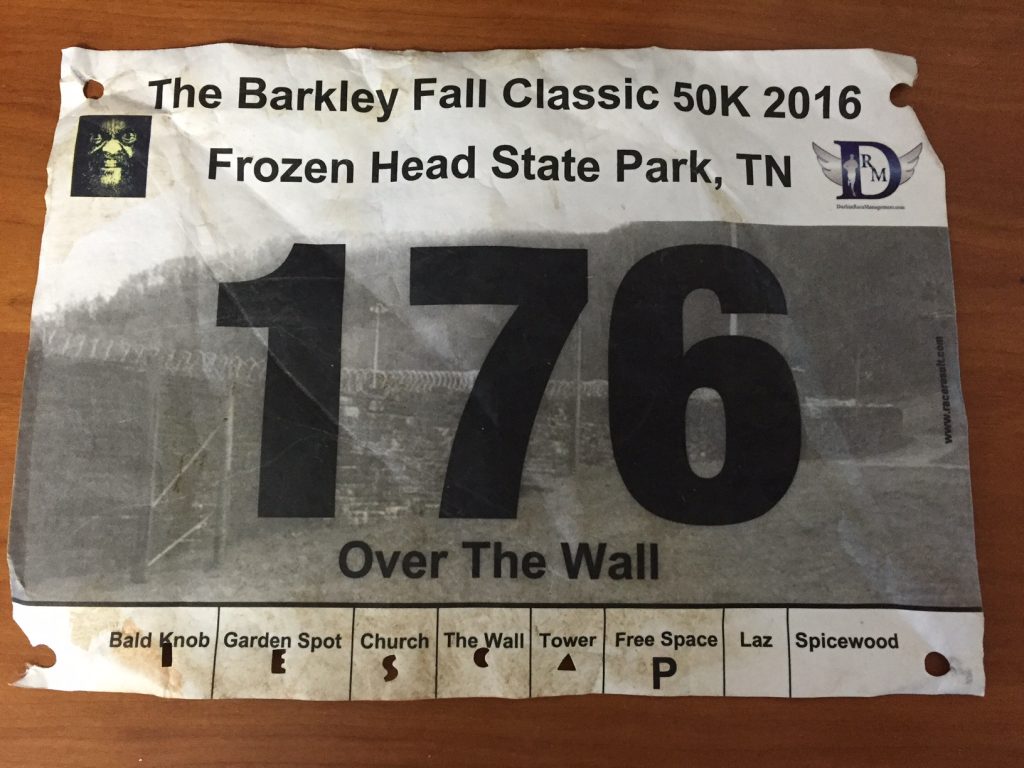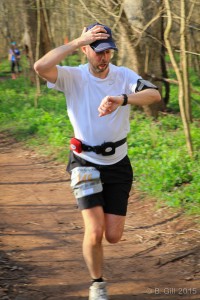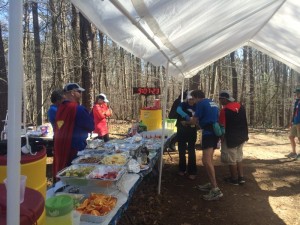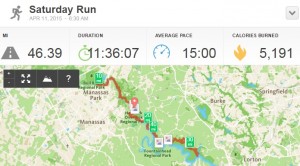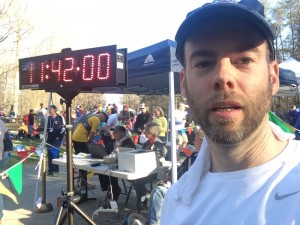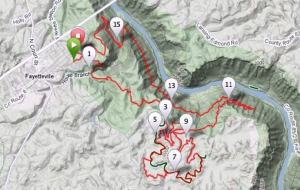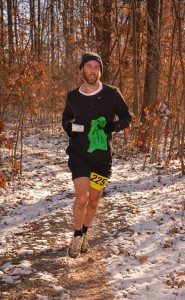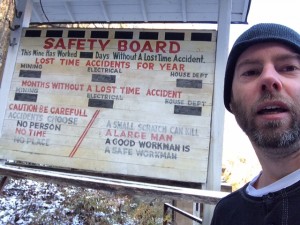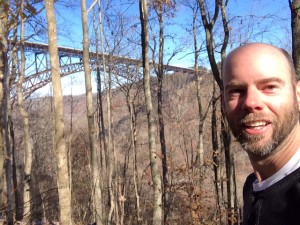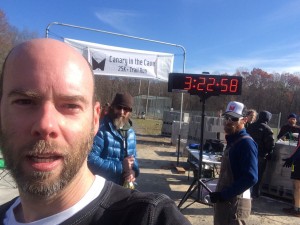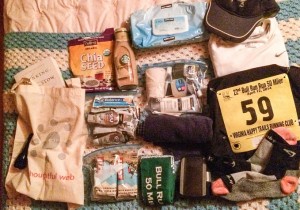Disce hinc, quid possit fortuna; immota labascunt,
Et quae perpetuo sunt agitata manent.
Friday morning, September 17
As the plane descends through the Knoxville overcast, I see the rolling hills of Tennessee, part of the ancient Appalachians, once as mighty as the Alps or Rockies, worn down over the ages by ceaseless mountain streams.
It is my fifth time visiting Tennessee. In 2015, I achieved my first did-not-finish result at the Barkley Fall Classic, the lite (50K) version of the Barkley Marathons, the infamous 100-mile race that often has no finishers. In 2016 I returned for another DNF, slowed by yellow jacket stings and hot weather, I missed the time cutoff by a few minutes. In August 2017, I drove to Oak Ridge to see the Great American Eclipse, then in September I went back for a charmed third attempt in Frozen Head State Park. Five hours in, I made a wrong turn at an unmarked fork on the trail and lost hours wandering in the wilderness, spoiling my chances of a 50K finish.
After each failure, I got a flimsy dog tag in recognition of completing the marathon portion of the race, swore I would never return to Tennessee, and went home to lick my wounds. A few months would pass, and I would put my name on the waitlist for the next BFC just in case, and then a midsummer invitation would arrive and I would heed the call of unfinished business. But three strikes were conclusive. I changed my focus to beating the Oprah Line and enjoying trail events close to home that are too long to worry about speed.
One day I noticed that the 2021 BFC would fall on my birthday, and I made a reminder on my calendar, years in advance, noting that it would be a good chance to check that to-do list item off after setting a respectable personal best at the marathon. I signed up for the Richmond Marathon in November 2019, but logistics fell apart and I bailed out. 2020 came and went with most events cancelled and nothing to train for. A friendly instigator suggested the Baltimore Marathon in October 2021, providing a training spreadsheet. I had never been organized about training, just doing some long runs on the weekend and at occasional events. What might happen if I actually prepared?
April 29: 3 miles in 29:28
I started training for Baltimore with a short run along the Washington and Old Dominion rails-to-trails bike path. I would get to know this path well, running it more than 70 times through the summer.
Friday afternoon, September 17
On the way to packet pickup at Frozen Head, I visit the K-25 History Center recently opened near the site where I watched the 2017 total solar eclipse as part of an American Museum of Science and Energy tour. Oak Ridge was a key site for the massive World War 2 effort to enrich uranium for the bomb, and K-25 was once the world’s largest building.
I am charmed by a gallery of photographs of Tennessee mud, a recurring theme in the oral histories of the site. I anticipate seeing more mud before the weekend is over.
June 5: 12.4 miles in 3:21:46
I joined a running group for a training trail run near Browntown. We kept the pace casual as Caroline added a 24-hour 100K to her impressive resume a week before. I asked for training advice and they said “If you want to run faster, you have to run faster,” the apparent tautology referring to advanced techniques of intervals and ladders, mixing intensity.
Friday evening, September 17
I arrive at the park to pick up my race packet and, most important, the course map, a closely-guarded secret that varies each year. I am shocked: the course is very different from the three similar routes I ran and have studied exhaustively. There is a new loop I have never seen, designated as the “50K Only” section. To qualify for this loop one must reach the decision point within 11½ hours. The three times I entered, this decision point came after 9½ hours, leaving almost four hours to hike in the final loop. If I just make the cutoff and go for the 50K, I’ll have less than two hours to complete this loop, which begins with a steep climb up the switchbacks of Bird Mountain.
Rat Jaw, the most famous and challenging climb, straight up a mountain overgrown with thorny briers, features twice. We will have to climb the upper half and then, after completing some other obstacles, come back and climb the whole thing.
As I worry over the route, I hear people talking about a mistake on the map. Apparently it is misprinted, and we will have to do the new loop twice, once at the start and again if we can beat the cutoff at the end. My optimism has dissolved, but I try to hide my dread. Jenny Thorsen, another three-time starter, is taking photos this year and will provide the cover image and photos for a race report in the November issue of Ultrarunning magazine; I smile for the camera.
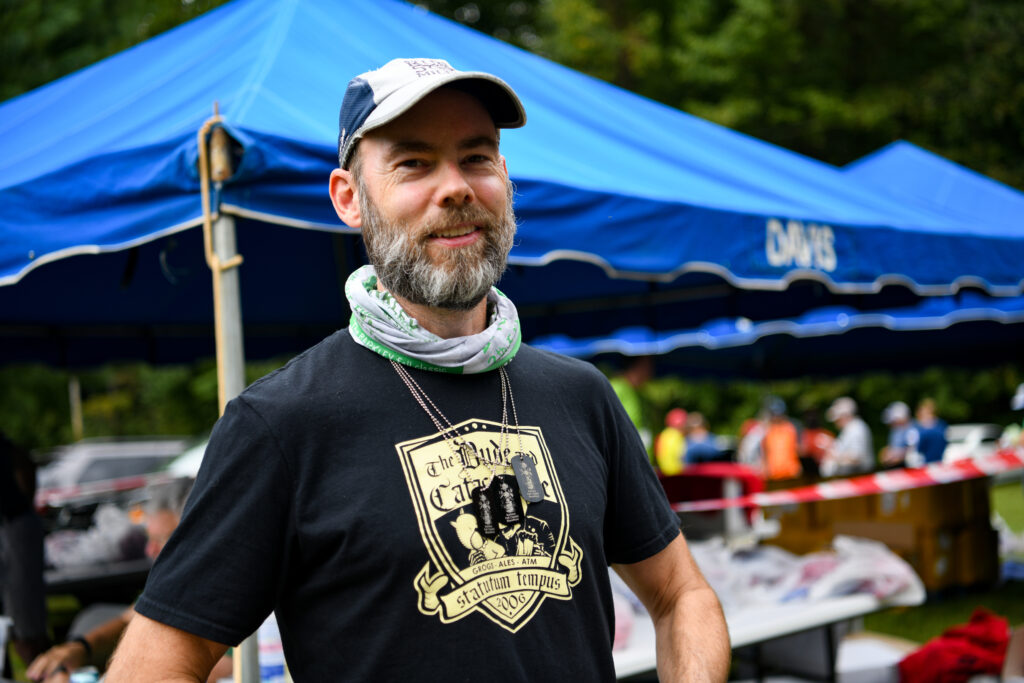
As my race seems more and more hopeless, I try to relax by chatting with other entrants over the chili dinner. Many are new, and I don’t refrain from offering advice. The early cutoffs are very generous, as race director Laz doesn’t want people to be sent home before they have had a chance to suffer many of the main attractions, so you can’t rely on beating cutoffs for pace. Course marking is minimal, as demonstrated by my 2017 race ruined by going off course. I describe some of the tough challenges and the spartan nutrition provided at aid stations. Someone asks if he should bring his head lamp. I tell him I have never needed one, neglecting to add that I have never actually finished. The cutoff for completing the 50K will be at 8:20 p.m.
I return to the motel and have a traditional pre-race meal at Los Primos across the street. I draw a simplified map of the course on paper, knowing that I won’t be inclined to spend time pulling the big cloth map out of my pack during the race. Over the past weeks I have been learning to draw the park map from memory, with trail names and blaze colors and intersections, hoping to avoid surprises, but none of this helps me know what to expect. At least I know the course now, and we received assurances that race officials would direct traffic at the important waypoints.
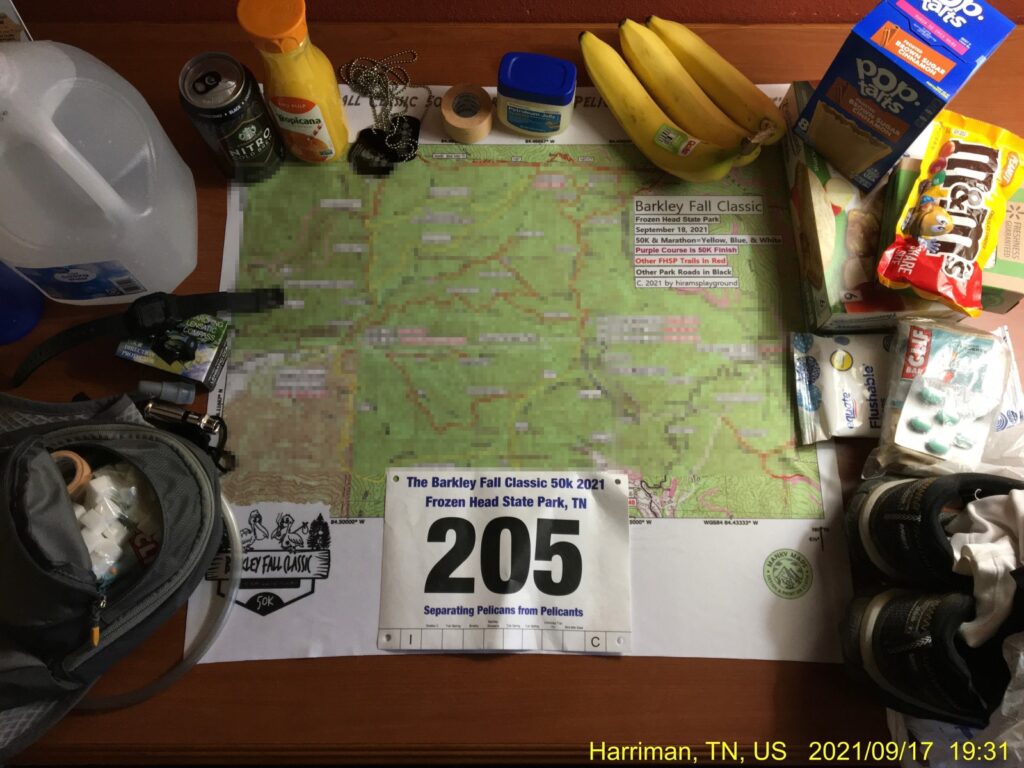
June 13: 13.5 miles in 2:33:57
Brood X cicadas were everywhere. Baltimore training run #32 called for 8 miles on the schedule, but I felt good and went for a half marathon. I also ran on the previously scheduled rest day, an exuberance I would eliminate as training distances increased.
Saturday morning, September 18
Friday night I can’t sleep. I take a hot shower to try and relax. Back in bed the A/C cycling on is too loud, so I put in earplugs. Then I can hear a high-pitched whine coming from the fridge, so I unplug it. I read a few pages of something unrelated to running. I take a Benadryl pill. I was going to buy sleeping pills for just this scenario, but learned that they have the same ingredient as the antihistamine I brought for bee stings. The diphenhydramine makes me feel fuzzy and awake. The earplugs become uncomfortable, so I remove them, and turn up the A/C so it won’t cycle on and off. Then it gets too cold. I turn it off. It gets muggy. It’s 4:30 a.m. and I get up. I try to poop and nothing happens. I am feeling despondent, dreading a day of misery ending in failure.
June 20: 9 miles in 1:42:13
It was very warm and humid, but I managed to finish the scheduled distance in time to attend Father’s Day brunch. After 38 successful training runs I was feeling good and looking forward to Baltimore.
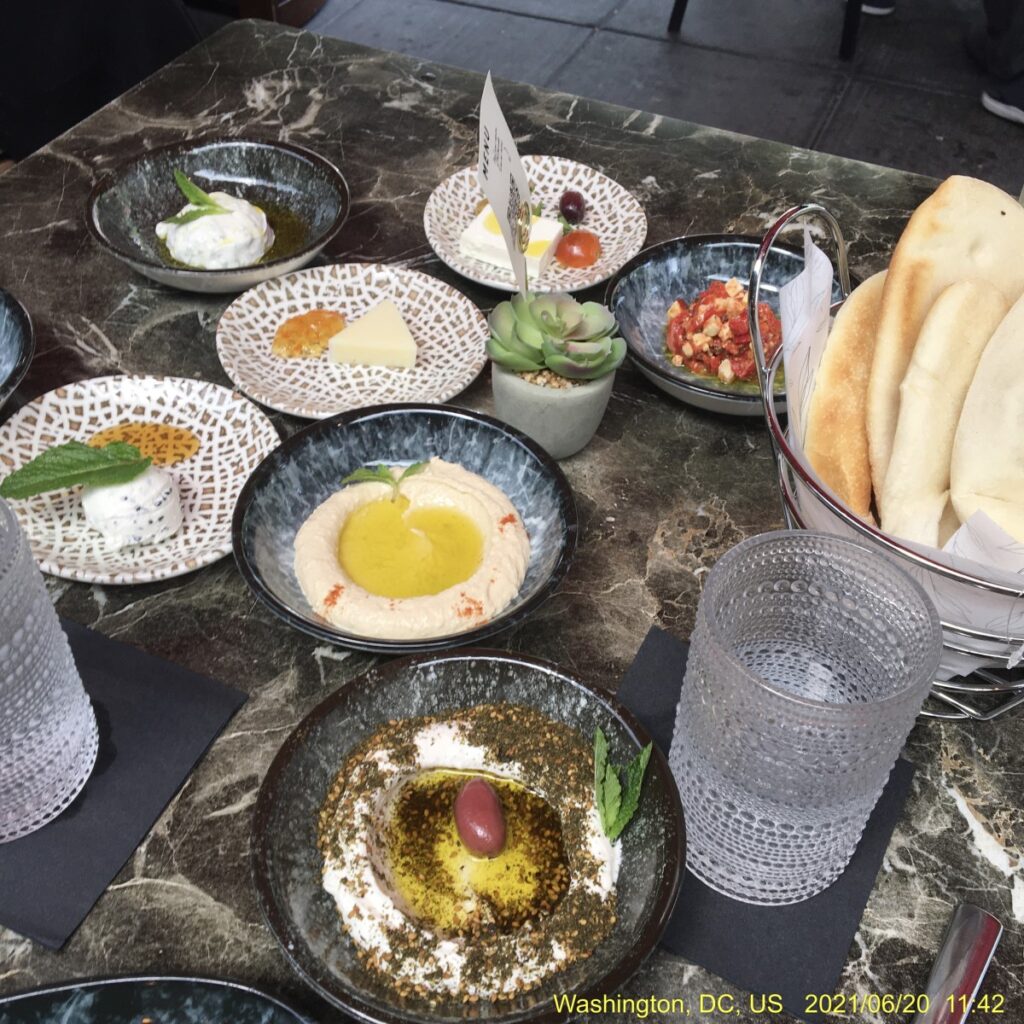
Race Start to AS1: 3.5 miles
Cutoff 8:45 a.m.
Target 8:00 a.m.
Lingering in the motel room, I fill my water pack and eat a banana with some coffee. My gear is ready so I sit down and look at the map again. At the restaurant I had started writing out a race card but couldn’t come up with goal times for the waypoints. I write a new card and just wildly guess how long it might take me to finish each leg of the course, smoothing out the hours so I would get to Laz at the decision point cutoff just in time at 6:30 p.m.
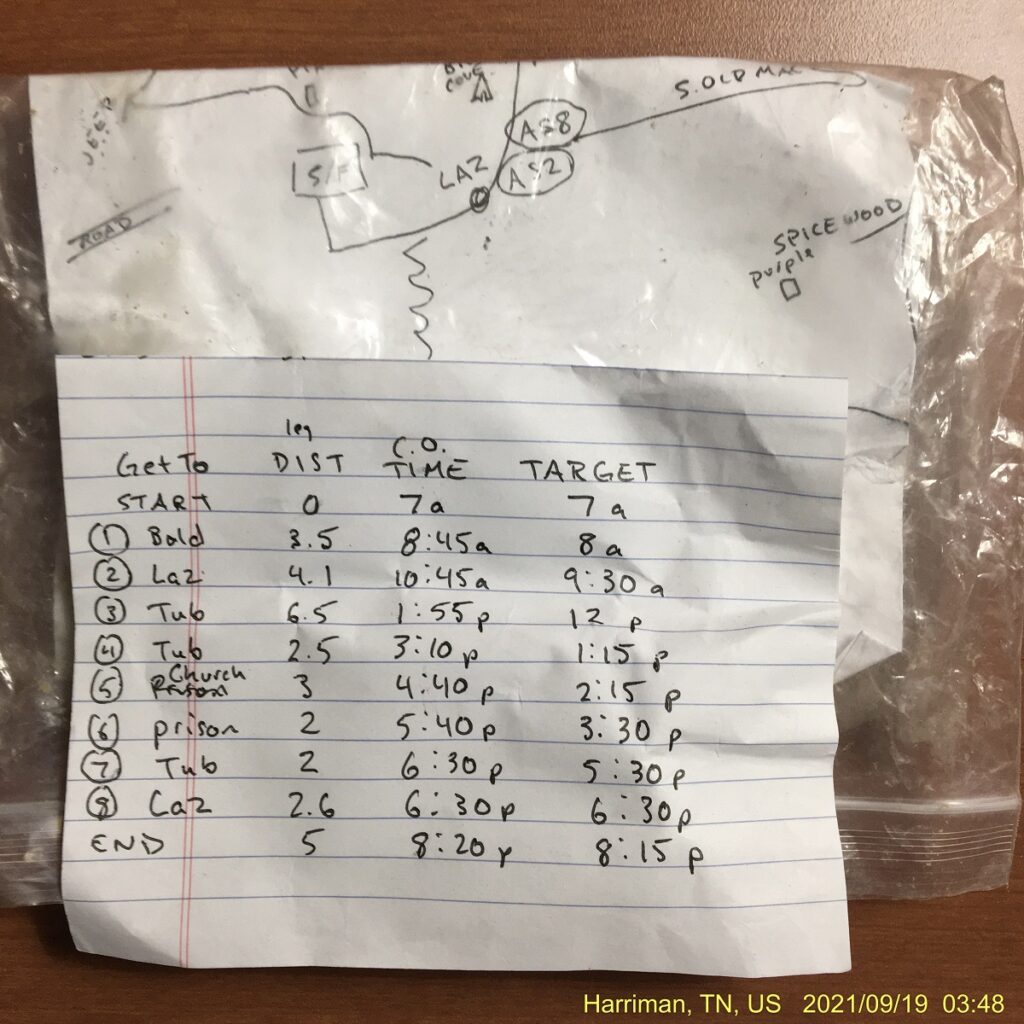
Somehow this written plan, however unfounded, makes success seem possible. I don’t know if I can hit these target times, but I don’t know that I can’t. I try again on the toilet and succeed at the mundane but essential task. The despond clears and I put on my shoes and head out.
I follow an ambulance all the way on the half-hour drive from the motel to the park. I am directed to a parking space far from the start, where I take my time with a breakfast pastry and some orange juice. When I hear the announcements start, I join the crowd and try to squeeze my way a little closer to the front, but at 7 a.m. I’m still in the back half as we set out.
We follow an “unimproved” jeep road that goes slightly uphill. The footing is tolerable and I am able to run at a comfortable pace, not overtaking many people but not being overtaken. As 8 a.m. approaches I start to worry I’ll get behind on my guesswork plan right away. My watch hits 7:59 and I am confused to see runners going the other way higher up on the mountain, but there wasn’t any switchback on this leg until … sure enough, the aid station appears just ahead and I arrive within 30 seconds of my target.
July 11: 13.1 miles in 2:30:23
The schedule called for 12 miles, but when I reached six I was getting close to the trailhead and couldn’t resist continuing so I could see all the mile markers on the way back. It was quite hot and I didn’t bring any food, just water and S-Cap salt/electrolyte tablets. Had to walk the last half mile home and it felt great to finish.
AS1 to AS2: 4.1 miles
Cutoff 10:45 a.m.
Target 9:30 a.m.
I can’t tell if the distance accounts for the mistake on the map; including the extra loop seems to make it longer than 4.1 miles but it’s mostly downhill so I budget 90 minutes. The first part is great single-track dirt running, except for the part where I step off the trail to pass someone, almost sink my foot in a yellow jacket nest and get a sting on the shin. One sting isn’t worth worrying about, and I continue on to the loop we will repeat in the evening if we get to Laz by 6:30 p.m. and choose to go for 50K. The last part of this loop is a rough downhill jeep road. I am very slow on the technical descent, nervous about falling or turning an ankle, and many people pass me. Just as I start to worry about my time, I see activity ahead, and I am in the bib punch line within a minute of my goal.
I note that it took me about 30 minutes to come down that jeep road to what will be the 50K finish.
July 24: 15.0 miles in 2:29:59
Baltimore training run #59 called for 14 miles, the longest day yet. I reached mile 7 and went an extra half-mile to reach the Difficult Run crossing.
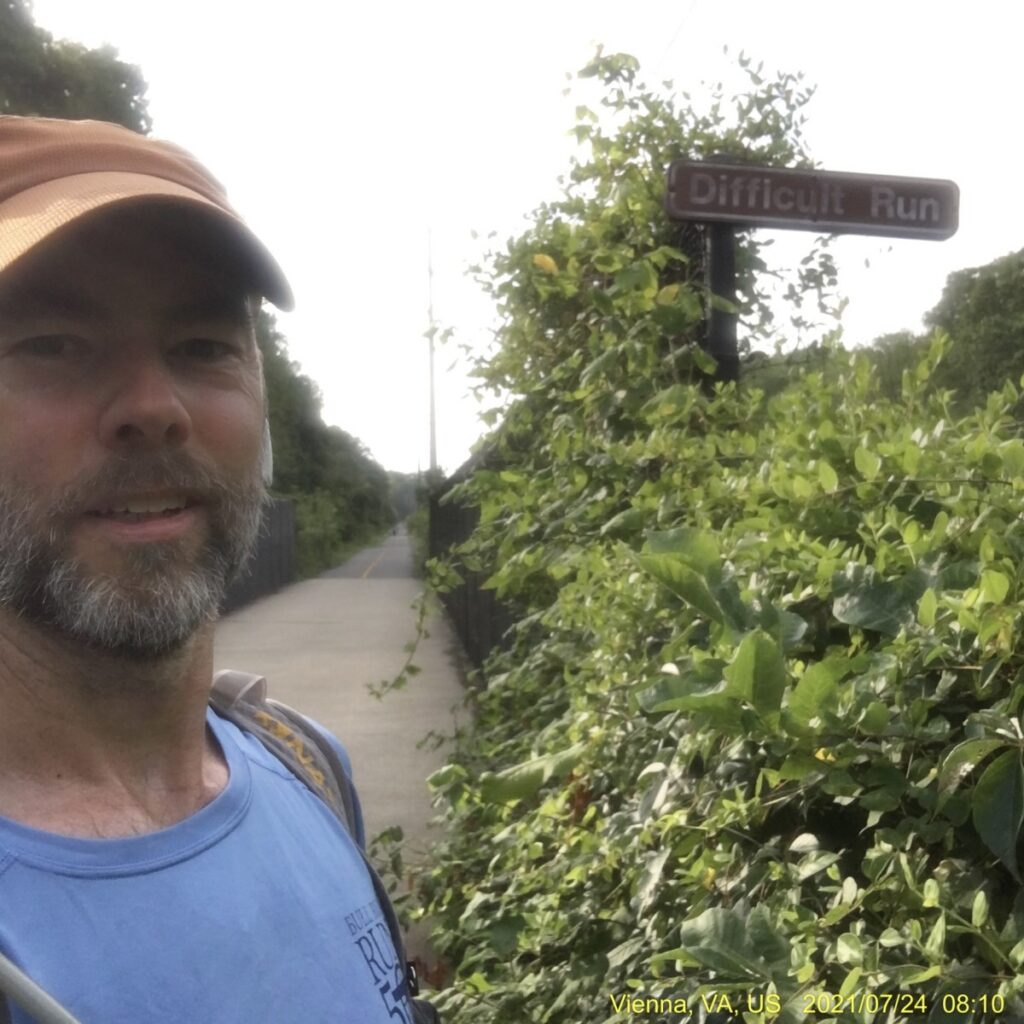
AS2 to AS3: 6.5 miles
Cutoff 1:55 p.m.
Target 12 noon
It’s time for Chimney Top. On my previous visits, this grueling switchback climb followed by a few miles along the ridge was the 50K extra distance, so I have never seen it, but I have heard reverential stories about the ascent, nicknamed Big Hell. People suggest planning on two hours to reach the summit, but I can’t find that much time in my budget so I hope to crest in 90 minutes, then take another hour to reach AS3. I see roughly 20 switchbacks on the map, and count them as we go up. Ismail Tekin comes up from behind; I tell him I saw him on the entrants list when I was looking for people in the D.C. area to carpool with, and congratulate him on finishing the C&O Canal 100 Miler in April. He is probably creeped out by all this personal information, but his distinctive name made it easy to find out that he is a well-known hairdresser at the Four Seasons in Georgetown.
When he advances ahead, I notice that I can hear my heart throbbing in my ears. I use the digital Casio watch I bought for an earlier BFC (where GPS is prohibited) to count the beats and find my heart rate is 160, a bit high. I pause to lean against a tree now and then to manage my cardio. As 11:00 approaches, I have counted 14 switchbacks, and think I’ll probably need two hours to reach the top after all. But after a few more switches I see the massive boulders that line the ridge and it seems I am on schedule. I hike a bit longer on the ridge trail, then start trotting again. I can visualize where I am on the park map and recognize the hairpin turn and anticipate the junction to Spicewood Branch trail which is close to AS3. I end up reaching the aid station at 11:50 a.m., now ten minutes ahead of schedule.
July 26
An invitation to join the BFC arrived in my e-mail, with a prominent “Decline Offer” button hinting at the wise course of action.

July 28: 8.1 miles in 1:22:52
I was very preoccupied pondering the invitation. The years-long tug of unfinished business was compelling in the abstract. But compared to having a nice normal birthday observation at home with family, devoting three days to hunting my white whale seemed self-indulgent and eccentric. Nor did my 0-for-3 record bode well for success at capturing the illustrious Croix de Barque medal awarded to 50K finishers, without which I would return home utterly defeated.
But sometime after 7 a.m. on a warm summer Wednesday, while distractedly running along the bike path and reflecting that I might not ever have a better chance, I saw some deer and decided that paying for a race spot, arranging time away from work and family, two seven hour drives and two hotel nights: all that would be the easy stuff. So I did the easy thing and signed up.
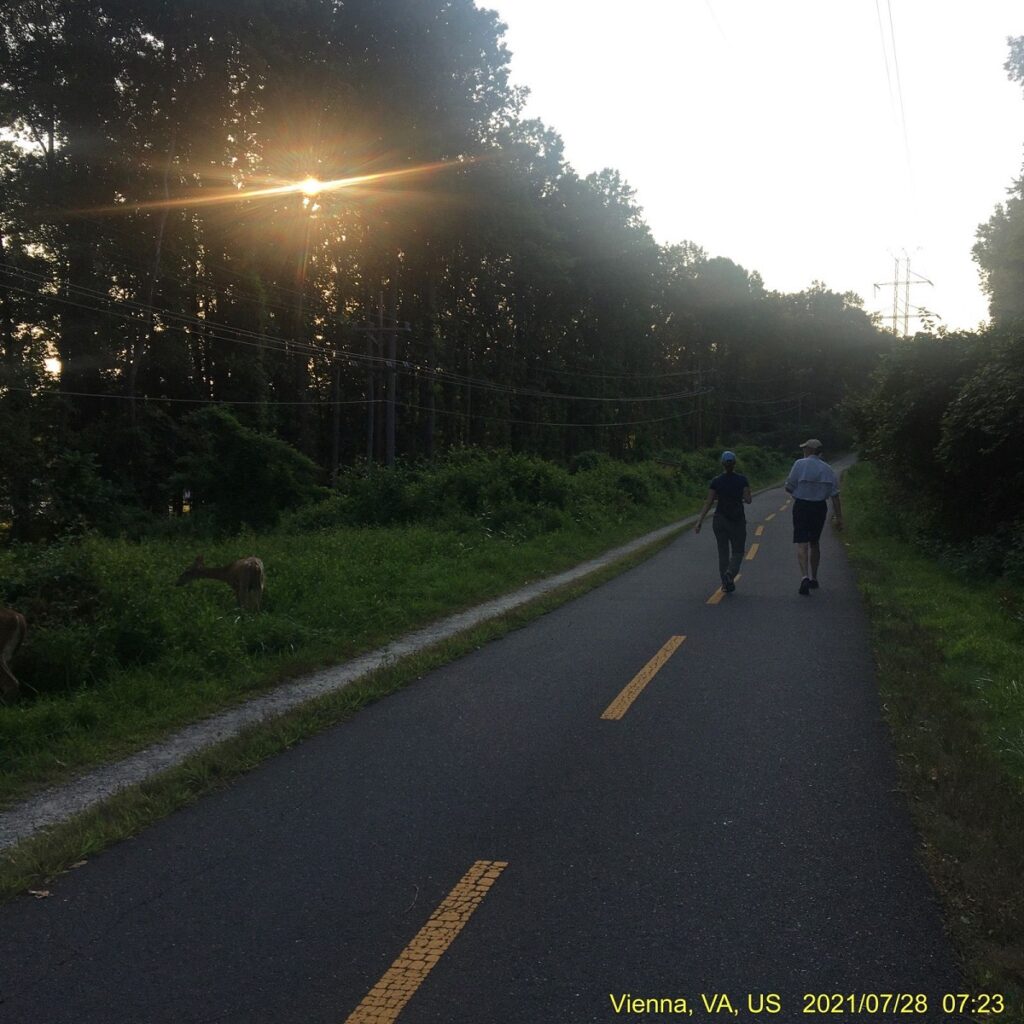
AS3 to AS4: 2.5 miles
Cutoff 3:10 p.m.
Target 1:15 p.m.
I am delighted to be ahead of schedule, five hours in. I take on some water and grab an apple pie pastry, coated with sugar glaze and filled with sickeningly-sweet filling, just the empty carbs I crave. I’ve already taken one salt tablet, and I am drinking water regularly, but the overcast sky seems like ideal weather, until the first thunderclap warns of rain on the way. I use some of my ten-minute cushion to walk out, enjoying dessert. Then we jog down another rugged jeep road to get to the midpoint of Rat Jaw. I continue to find the descents tough on joints and feet, and I feel slow and unsteady as it starts raining. But I try to make the most of the moment, remembering the horrors that loom just ahead.
Soon we turn onto the mining trail on which I made a wrong turn in 2015, and then Rat Jaw is revealed: a treeless power line cut that goes straight up the mountain. In 2016 the saw briers had been cut down, but this year they are thick on both sides of the narrow dirt path. The leaders have forced a way through (photos online would show the dermatological consequences of trailblazing) and we start marching up as the rain begins pouring harder.
It is like climbing unstable dirt stairs, and I am content to pause and breathe at the many bottlenecks that form below particularly tough spots. But footing in the damp soil is still pretty good and the rain is amazingly refreshing. I make good progress and don’t have to constantly drink water. I notice that people keep talking about rattlesnakes, making rattlesnake jokes, singing rattlesnake songs. It’s a crazy camaraderie and I can hardly believe that going up Rat Jaw is not completely miserable. Everyone around has a positive attitude, joking about the wisdom of grabbing the fallen cable while lightning flashes all around.
I’ve given myself an hour and fifteen minutes for this climb, but get back to the aid station in an hour (assisted by getting a bib punch at the bottom of the steel lookout tower rather than climbing to the top in the electrical storm).
August 8: 13.2 miles in 2:29:01
Planning for a family vacation, I joked that August would be a rest month, but I knew I had to get some miles in as the marathon was two months away, and BFC was becoming more than a fantasy.
We were visiting Athens, staying in Edem Beach about 8 kilometers from the Acropolis. As we toured around, I watched for good places to run and noticed Panathenaic Stadium, the world’s only all-marble stadium and finishing point for the Athens Classic Marathon honoring the legend of Pheidippides.
Running log notes:
Early entry to Panathenaic Stadium for joggers is a myth, opening was at 8 a.m., so I took a peripatetic detour around the serene Lyceum of Aristotle. Bought a second half-liter of water from the kiosk (the vendor had heard of Kipchoge but no Olympics news) outside the stadium then did a few laps to get my miles. The view is inspiring but I looked more and more like Zatopek as the sun rose. The way back was harder, following GPS breadcrumbs with no excuse to stop for map checks. At last, saw the sea in the distance. Θάλαττα! θάλαττα!
AS4 to AS5: 3.0 miles
Cutoff 4:40 p.m.
Target 2:15 p.m.
At 12:50 I am back at the aid station, now 25 minutes ahead of schedule. I am soaked and, amazingly, chilled after climbing Rat Jaw and jogging back from the tower. The snacks are now floating in trays of rainwater, so I grab a tangerine and use some cushion minutes to stroll out. I pull two Band-Aids from a pocket and apply them to my front, having learned how quickly discomfort sets in when running in a rain-soaked shirt.
Our next challenge is a steep descent down another power line cut. I’ve always enjoyed this part; it’s too steep to run and many places offer no alternative to buttsliding. This year the dirt slides are slick with mud as the rain continues. I find a stout, two-foot stick and use it as a primitive brake to at least avoid crashing into people. Soon I am so muddy there’s nowhere left to wipe my hands before wiping a clod of mud from my face.
Ismail is climbing out and I tell him he is looking strong. Other people returning give updates on the conditions below and distance to the aid.
My watch is too muddy to read when I reach the aid station sometime around 2 p.m. I drop my stick to get my hands rinsed and ask a volunteer for tips on getting over a muddy ditch on the way back. We watch a guy run a few steps, leap across, splat into the mud and slide back down like a cartoon character. The volunteer says that people have more success bushwhacking through the weeds alongside the ditch. This way turns out to be filled with thorns; mud and thorns are the two options on the day’s menu.
August 15: 18.3 miles in 3:22:08
While on vacation I skipped short training days, and we were in Izmir on the next long day, a 17-mile Sunday. Using Strava’s heat map I was able to plot a route all the way around the harbor, from one ferryboat station to another, including a visit to the 1850m track around Kültürpark, frequented by street cats and dogs.
Running log notes:
“Kolay gelsen!” [may your work be easy] calls a passing cyclist at mile 5; “Sağ ol!” [Thanks / health to you] I answer. By mile 9 I need a pit stop and ask security at Alsancak station. She directs me to a cami. I’m not dressed for a mosque, and outside the station I see the same cyclist. He also tells me to look for the cami. I never see it but find a public toilet, the door still open as someone is just leaving so I pretend not to see the coin slot (I have only a 10 and 100 in paper money). There is 2-3 cm of water on the floor, but I don’t hesitate as the clock is still running. Suddenly water starts spraying from the walls, fortunately below knee level. “This is fine” I tell myself, trying to finish up. Then the toilet folds into the wall with a mechanical noise. I finish peeing onto the floor, avoiding a turd that is immobile in the ongoing spray. No photo of the moment as I hustle out of there.
It is delightful to see the destination throughout the run, but the last kilometers are slow, sustained by some sugar cubes and another half liter of water bought with unusual difficulty as shops are still opening. I see the 9:00 and 9:15 ferries depart on time and wonder if I can make the 9:30. I just miss the 9:45. On board the 10, I buy a mask indulgence in the form of coffee & simit, take a seat on the outside deck and enjoy reviewing my route as we steam toward home.
AS5 to AS6: 2.0 miles
Cutoff 5:40 p.m.
Target 3:30 p.m.
Laz miles are known for understatement; perhaps he measures the map with a straight ruler. Some entrants would later plot the route using online tools and suggest that 38 miles was closer to reality for the allegedly 50K course, with some 12,000 feet of accumulated elevation gain. For this leg the climb back up the mountain and down “Meth Lab Hill” on the other side is about two miles as the crow flies, but we are crying murder as we struggle through one foot at a time. The mud slides are impassable upward, so we tramp through thorny brush on the edges. Focusing on short-term goals has been working so far, so I aim to reach the top by 3 p.m. That works out, and I immediately plunge down the other side.
Meth Lab is a joke. I am incredulous. Normally, it’s a very tedious and demanding downhill through a rocky ravine. It’s a place that brings the two meanings of talus into focus at once: the unstable piles of broken rock you have to navigate over, and the bone in the ankle that promises to snap at any misstep. Today, everything is wet, attractive stepping stones are painted with mud from previous runners, and the path traces the edge of a steep gully sometimes six feet deep with a roaring muddy stream at the bottom. Running seems impossible, but I sort of hop and shuffle my way down. There are some unavoidable butt slides as well, but now the mud is spiked with sharp rocks. I miss my stick, trying to go down at a controlled rate.
We emerge in the little town of Petros, and I jog up to the aid station outside the prison. It’s 3:30, but I know the cutoff point is actually Keith Dunn’s bib check behind the wall, so I feel behind schedule for the first time. I fill up my water pack, get another apple pie treat (“The whole thing?” the volunteer asks) and walk up toward BMSP.
As I walk along, a volunteer or someone’s crew chases me down and starts firing friendly, helpful questions. How am I feeling? Am I getting enough water? How’s my nutrition? Do I need any salt? Salt! I’ve only taken two tablets since the morning. I’m not sweating as much as I would on a sunny day, but I’m sure I’m sweating. I thank her for the reminder and wash another electrolyte tablet down with the pie.
Another runner and I get mixed up with tourists visiting the prison, trying to find our way along the course. I see runners coming out the tunnel on the right and head for the front door we used in previous years. Someone shouts at us and waves from the left yard, while a tourist shouts and points us toward the other runners he sees on the right. We go left, and a volunteer sends us through a side door to the back yard. As we hike toward the ladder set up to scale the wall, she is talking in defeated tones about how Rat Jaw was too much the first time around. I feel like I’m still in it, but can’t get myself to hustle and end up holding the ladder as she climbs over.
I follow and say hi to Keith as he gives my bib another punch.
August 21: 8.0 miles in 1:18:25
My flight out of Athens was delayed and the gate agent wouldn’t send me through as I would miss the connection in Toronto, so I ended up with an unplanned layover and a free room at the airport Sofitel. I was hoping to be home Sunday for an 18-mile training day and had to make the best of the situation.
Over dinner I plotted running paths to Marathon (27 km away) and the nearest Attica wildfire (14) to kill time after a flight delay scored me my first ever free hotel night. A 500 cc dose of Φιξ (Fix) beer dulled these ambitions, and I scaled back to the scheduled 8-mile day. A dog guarded the long term parking lot, but she was too skittish to photograph. An army of taxi drivers idled around the perimeter, some eyeing me with curiosity, one offering a ride. Orange helicopters ferried water south as the moon rose over the airport.
AS6 to AS7: 2.0 miles
Cutoff 6:35 p.m.
Target 5:30 p.m.
It’s 3:40 p.m. and I am ten minutes behind my guesswork schedule as I press Keith for an honest assessment of my position. Laz has allotted 55 minutes between cutoffs to get from here to the top of Rat Jaw, an absurdity resulting from having to align the easy early cutoffs with the finish line reality. By now the “virgins” will have seen the major sights so it’s time for them to go home and try another year.
Keith is the chronicler of the Barkley Marathons and the BFC, his Twitter feed the main source of live updates to outsiders. He assures me that two hours is enough for Rat Jaw, and I have almost that much time in my budget. I walk through the dark tunnel and jog over to the base of Big Rat where half a dozen runners are struggling. It’s a sheer dirt face 10-12 feet high with almost no vegetation or firm footing. A runner at the top is kind enough to pull people up from halfway, but there is a queue for this service. I start up a bit to the left and when I am as high as I can climb, my reach is several inches short of the base of a woody stem that looks like a good handhold.
I jump up and grab the stem, slamming uncomfortably into the wall. Pulling my knees up, I am poised like a spider but with nowhere to go. Looking up I see only weeds and weak roots to grab at. Above and to the right there’s another jug just out of reach. I think of Tommy Caldwell trying again and again to complete a “kinetic” maneuver in “The Dawn Wall” but don’t want to risk dropping back down this face, despite its ridiculously miniscule scale in comparison to El Capitan.
Giving up on strategy, I get up over the edge with brute stubbornness, clawing at whatever I can. I have a pair of gardening gloves in my pack, but the fact that my hands are already torn up and my reluctance to stop and take off the pack convince me to go on without them.
The lower half of Rat Jaw is sloppy after the rain but doable. I am behind a runner who is incredibly poised; she takes short regular steps, never wavering or flailing around, making slow but smooth progress. I focus on her shoes and imitate her foot placement.
Eventually we reach the midpoint where we joined Rat Jaw in the morning. A park truck is nearby and a ranger watches us climb up. He says “I’m gonna give you the spiel. There’s a thunderstorm 25 minutes out and you’re going to be on Rat when it hits. I suggest you take the road up to the aid station and a DNF, but the decision is up to you.”
“Okaythanks” I reply without breaking stride. Later a runner would express profound regret at following the ranger’s suggestion to bail out. Another runner would express regret for not taking the advice.
John Fegyveresi is one of 15 people who have ever completed the real Barkley Marathons since the first race in 1986. He completed the five loops around the park in 59:41:21, just ahead of the 60-hour limit. BFC is one loop which keeps more to established trails. Feeling that “a loop around the park on trails would be a nice change of pace and a great way to spend a day at Frozen Head,” Fegyveresi entered the Barkley Fall Classic in 2019.
After dropping down from the wall, we walked through the tunnel (which is always fun), and then began the long, brutal climb up the Big Rat….during the absolute hottest part of the day. There’s no simple way to say this. It was pure misery. The briers were over 6 feet tall, and in many parts I had to crawl on all fours to avoid a complete butchering. I had forgotten just how long the combined lower Rat and upper Rat climb was (over 2000 feet of gain). Just making the mid-point of Rat Jaw (the part where the famous powerline section starts) seemed to take forever. When I did make it there, nearly out of water, I found over two dozen runners simply laying down…totally exhausted. It was like a war zone. I fought off the enormous temptation to join them, and simply trudged onward. I knew that the upper part of Rat Jaw can be broken into three manageable sections. As long as I was moving, no matter how slowly, I’d be making progress.
La Gira de Lázarus (BFC 50K)
As before, I am greatly aided by the overcast skies and tolerable temperature in the 70s. But the refreshing rain has converted Rat Jaw to mud. The middle of the channel is almost hopeless, full of long parallel streaks carved by shoe lugs sliding down. I can find some purchase along the edges, on top of the trampled down saw briers, but get more entangled in the standing plants. There’s nothing to do but plod on. I see the previously poised runner again, now she is crawling on elbows and knees, groaning with every advance.
Some videos posted after the race give an idea of the conditions on the ground. But nothing conveys the scale of the climb like David Martin’s drone video over the 2019 race. In full screen with high resolution, you can pick out the entrants making their way up like a line of ants.
Despite the difficulty, the atmosphere is often close to jovial. We are certainly getting what we came for. I am followed by a runner from Colorado who is full of the can-do positive energy of military experience. He is constantly chatting with people ahead and behind, providing a welcome distraction from the slog. At one point both my feet lose their grip and he arrests my slide with a firm shove on the backside. I thank him for the support and he suggests I think of a way to explain the muddy handprints to my wife. We keep ascending, making what use we can of the cable that is now coated in mud. When someone loses control they swing wildly into the brambles on the side, sending people above and below off balance. I focus on goals within goals; the aid station is far in the future, but the next power line pole is in view, my next step in reach.
It seems to take forever, but time creeps when you’re having this kind of fun, and I eventually top out, get another punch at the base of the tower, and re-tie my shoes alongside two other guys who found their laces pulled loose. I arrive at the aid station at 5:20 p.m. and call out to no one in particular “Which way to Laz?” I have seventy minutes to reach the decision point where I can choose to drop down to a marathon finish or go for the 50K.
August 23: 18.1 miles in 2:58:50
After returning home from vacation, I went to bed at 6 p.m., hoping to preserve the jet lag that makes early rising easy. Not sure what kind of run I was up for after a transatlantic flight, I left the house at 4 a.m. with nothing but a water bottle. A runner immediately glided by on the sidewalk, shoes blinking in the dark. I headed west on the now-very-familiar bike trail, figuring I could turn around any time I started feeling tired. At five miles I felt great and kept going. I reached Difficult Run, eight miles out, and continued to the next road crossing to set a distance record before turning. I was out of water by the time I got home, but added two more miles to reach the 18 on the schedule for my travel day. My pace was 9:52 per mile, faster than I normally do shorter distances. I noted the benefit of a long break in regular training.
I started lurking in online channels for BFC intel, mostly finding sarcasm and crazy horror stories.
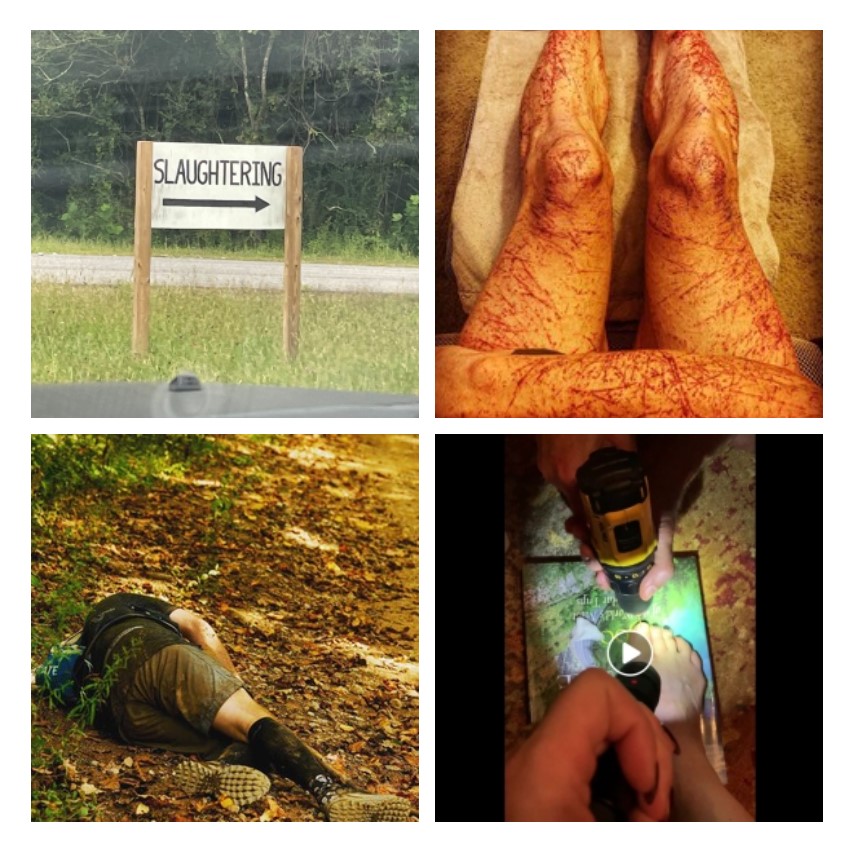
AS7 to Laz: 2.6 miles
Cutoff 6:30 p.m.
Target 6:30 p.m.
All I have to do is get to Laz. If I can reach him in an hour, I’ll be eligible to do the final loop and complete the 50K. If I am late, I’ll get the consolation prize, my fourth dippy dog tag with an image of Laz’s face. My mind returns to 2016, when I left the same aid station with a deadline to meet Laz at the trailhead to try and continue. I think I had about 50 minutes that year, but the trail was tough on weary legs and I arrived three and a half minutes too late. This year I have 20 minutes more time, and, though I don’t realize it until after returning home, we are on South Old Mac Trail, not North Old Mac Trail, and it’s considerably shorter. So I am delighted when I see a sign for Judge Branch, recalling that it is more than halfway on the park map.
I arrive at 6 p.m., half an hour ahead of my goal. I am perfectly elated, and walk right past the aid station up to where Laz is sitting in a camp chair with his bib punch. “You can take the marathon and be second overall” he says, a canned lie he tells everyone. “I didn’t come here for another dog tag” I answer as he gives me the punch, spelling I NAILED BFC on the bib (some get an F in place of the N). I start to go back to the aid station for a last refill but Laz stops me, pointing out that I’ve already crossed the timing mat and have to continue. No problem, I have at least a liter of water, a package of peanut M&Ms I’ve been saving all day, and a bag of sugar cubes. I ask for directions, confident that navigation is the only thing that can make me fail now. I’ll continue on the park road we started on eleven hours ago, pass the famous yellow gate, then left up Bird Mountain. I walk up the road, rewarding myself by burning a few minutes of my cushion.
August 24: 5.0 miles in 43:38
September 4: 5.0 miles in 39:53
As September 18 approached, I scaled back my training, hoping a long taper would give me as much strength as possible. Skipping longer runs made me want to perform more on shorter distances, and I beat my 40:09 race PR for the five mile distance.
I had never trained like this before, multiple times per week through the hot, muggy summer. I could see my numbers improving, and with them, my confidence. Maybe I could beat Oprah at last. But I had one more task before Baltimore in October.
Laz to 50K Finish: 5.0 miles
Cutoff 8:20 p.m.
Target 8:15 p.m.
I feel like my chance of victory has risen from minimal at the start, to maybe 40% at the prison, to maybe 90% now. In the past the 50K bonus mileage has been difficult, but with a generous time allotment that allows time for hiking after a long day. We have two hours and twenty minutes, normally plenty for five miles, even five Laz miles, but we will start by climbing the long, endless switchbacks of Bird Mountain.
As I walk up the road, another runner jogs past me, not showing much interest in my cheerful chatter. I pause at the yellow gate to get a quick photo before heading up into the woods.
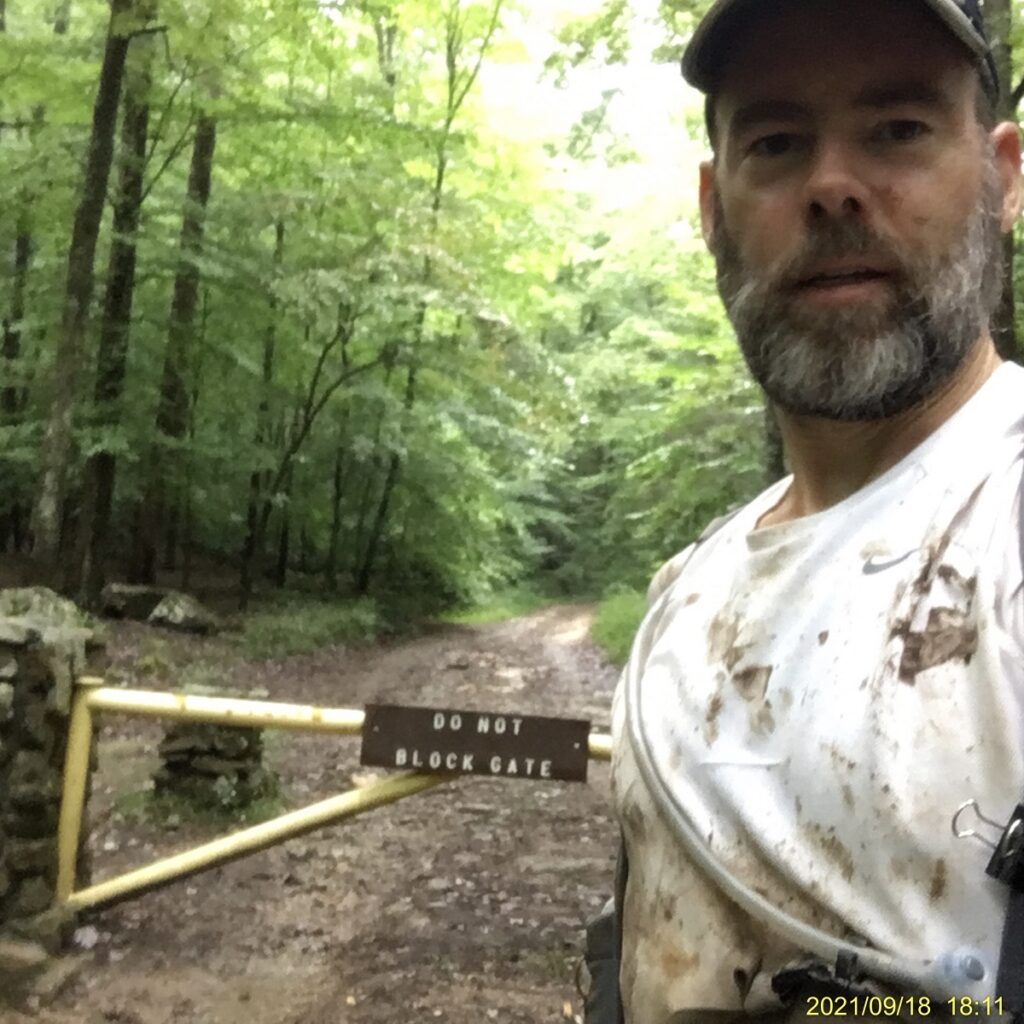
The Bird ascent was my first exposure to Frozen Head, and I have no misgivings about hiking. I am slow on descents, but make good time climbing, passing two or three people on the way up. The switchbacks go on forever, but finally we reach the intersection with the turn for the last loop. There are no course markers, but the park signs clearly indicate the trail we followed when we came through in the morning.
The path is flatter now, but I am still hiking. I recall in the morning it took me half an hour to get to the bottom once I reached the jeep road. Maybe it will take me 45 minutes in my current condition, so I should get to the jeep road by 7:30. It’s already 7, so I switch to a shuffling run, not much faster than my walking pace. After a while I hear voices behind, a group of five or six guys sounding strong, running together and supporting each other. That’s what finishers sound like, I tell myself. I step to the side of the trail to let them pass, then join them from behind. It is hard to keep up, but I recognize the feeling of strain from my training runs; it’s not supposed to be easy. We go on a while, then the caboose falls off. Not me, but the runner in front of me lets the train move on ahead. We are still keeping a good pace, so I stick with him.
We take a walk break on a short climb and talk a bit. Neither of us have finished before, and we are not sure where we stand. I dig out my peanut M&Ms and offer to share, but they have gotten wet and look nasty with most of the candy dye washed off. I eat a few and throw the rest into the woods, tucking the wrapper into my trash pocket. We continue running where we can and walk the rises. He mentions the “wildlife” we faced earlier, and I ask if he got stung by the yellow jackets. No, he’s talking about the rattlesnake on Rat Jaw. What? I thought that was a lot of joking around. Later I’ll find discussion of a six foot snake coiled two feet off the path, rattling at everyone going by. Someone recorded video that doesn’t show the snake clearly but depicts a runner going out of his way to stay right.
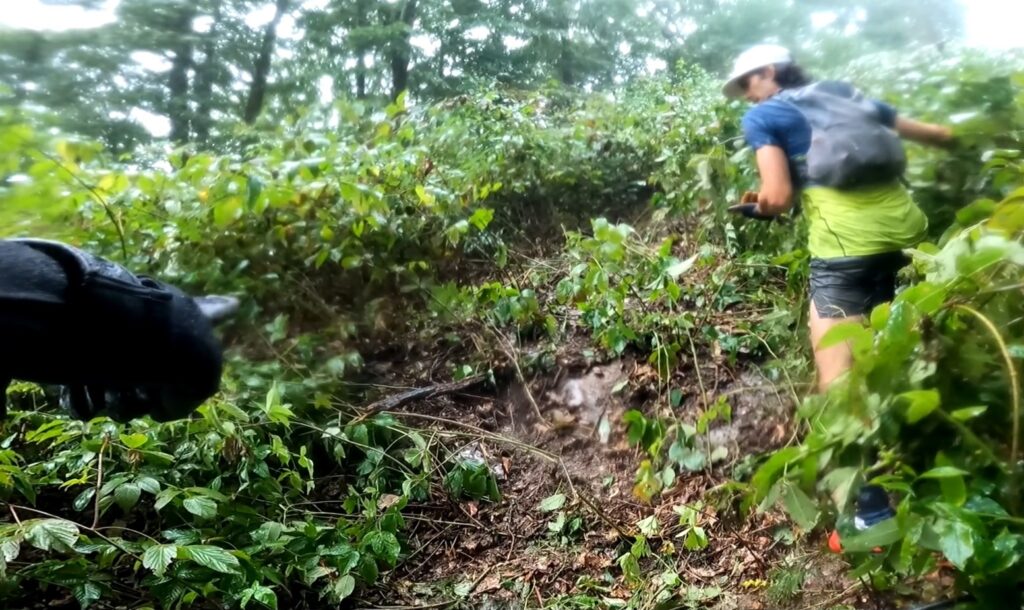
I am glad I didn’t see it, the second pass through Rat Jaw was intimidating enough.
Where is that jeep road? It is starting to get dark and someone occasionally passes us with a head lamp. I brought a head lamp but left it in the car; I never needed one before…
Finally I see a light ahead going downhill to the left. Soon we reach the turn and emerge onto the rugged road where at least there is more light. Everyone is concerned about time and I lose my running mate as I focus on my footing. More people pass me as I continue pounding my knees and toes. I’ll have to pay a two-toenail tax for all this banging down Meth Lab Hill and Ross Gap.
A guy comes from behind with a brilliant lantern that turns dusk into day. He is flying, and I can’t imagine how we ended up at the same point in the race if he is so strong. “We got this in the bag!” he calls out as he bounds downhill. Maybe your bag, I mutter miserably. I watch his light fade into the distance ahead as I pick my way along in the gloom. It’s getting closer to 8 p.m. and I am desperately trying to remember what we saw on the morning pass. The jeep road went on a while, then there was an intersection where a woman stood with a dog sending everyone left. Then it was a half mile or so through the woods before we emerged at the start/finish area.
Headlights ahead, coming up. I stop and stand on the side to let the vehicle pass, but the driver shuts off the engine and shouts that he will wait for me. I scramble down and he says there’s “a little more than a mile” left to my great relief. I ignore the quiet voice reminding me that “just another mile” is the joke message that is scribbled on course signs over the last half of the course. I confirm that there is just the one left turn ahead and continue on.
Before long I come up behind a runner with a light. She checks to make sure I am not a wild animal and then offers to let me pass, but I am only too content to follow behind. She is nervous about the cutoff, but doesn’t want me to tell her how much time we have left when I check my watch at 8:02 p.m. We hit the left turn and are now in the woods, where it is very dark. I pull out my phone and struggle to get it unlocked and turn on the back light with my grimy hands. I feel ridiculous putting my fate in the hands of a little LED and know I have to stick to my guide whatever comes. She is keeping a strong pace under the deadline pressure. Her light illuminates several feet ahead of her, and I have to plan where I’ll put my feet two or three steps ahead of time, my phone light almost useless. Fortunately the trail is pretty smooth with only occasional rocky patches.
We hear voices ahead, but agree that it’s hard to distinguish between a finish crowd and rowdy runners thinking they can smell the finish. There are no cowbells or music or loud cheers, just some yelling. I can’t decide if I am more incredulous that I’m going to succeed or that I’m going to fail.
The minutes tick away and at last we see a clearing ahead. As if in slow motion we enter the chute and my reflex is to give a kick and advance one place in the standings. But my light provider has absolutely saved my race and I let her go ahead. I am forever grateful to Amie #252 of Coxs Creek, Kentucky for lighting my way as I cross the line in 13:12:46.
At the finish I am in a daze. Ed hands me a Rat Jaw bumper sticker and the finisher’s medal I have been seeking for six years. SURVIE D’ABORD is engraved under Laz’s grimacing portrait, the same face that adorns all my race maps, right over the words “Better be off the Trail Before Dark.” I met Ed at the chili dinner last night but don’t recognize him. I walk in circles, then wander over to the meal tent for a veggie burger and diet Mountain Dew. Once I sit down I sip at the soda but it’s a while before I feel good enough to keep the burger down. My body seems to sense that the job is done and it’s time to start complaining, the beginning of a recovery that will take most of a week.
Many times during the day I recalled my wife predicting that I would finish this year. I always nodded and grinned hopefully, if uncertainly. I’ll be able to go home without shame, my usual determination to avoid Tennessee for the rest of my life a bit more credible.
I thought I would be dreading my early morning return flight, but I wake up before the alarm and am happy to pack my bags and clear out of town. At the departure gate I am zonked out in a chair when someone says “Those are the legs of a Barkley man.” I am wearing the race t-shirt of course, but my legs are lined with evidence of a Rat Jaw passage. The speaker sits down with her crewing friend, waiting for their flight to Philadelphia. She got a DNF this year and I commiserate. She is already talking about coming back to complete her unfinished business with Laz.
At the turn of the sixteenth and seventeenth century, a Frenchman was able to read a poem on the ruins of Rome signed by Joachim du Bellay; a Pole knew the same poem as the work of Mikołaj Sęp-Szarzyński; a Spaniard, as the work of Francisco Quevedo; while the true author, whom the others adapted without scruple, was a little-known Latin humanist, Ianus [Janus] Vitalis of Palermo.
Czeslaw Milosz, The Witness of Poetry
De Roma
Qui Romam in media quaeris novus advena Roma,
Et Romae in Roma nil reperis media,
Aspice murorum moles, praeruptaque saxa,
Obrutaque horrenti vasta theatra situ:
Haec sunt Roma. Viden velut ipsa cadavera, tantae
Urbis adhuc spirent imperiosa minas.
Vicit ut haec mundum, nixa est se vincere; vicit,
A se non victum ne quid in orbe foret.
Nunc victa in Roma Roma illa invicta sepulta est,
Atque eadem victrix victaque Roma fuit.
Albula Romani restat nunc nominis index,
Quinetiam rapidis fertur in aequor aquis.
Disce hinc, quid possit fortuna; immota labascunt,
Et quae perpetuo sunt agitata manent.
Translated into French by Joachim du Bellay (1522-1560):
Nouveau venu, qui cherches Rome en Rome
Et rien de Rome en Rome n’aperçois,
Ces vieux palais, ces vieux arcs que tu vois,
Et ces vieux murs, c’est ce que Rome on nomme.
Vois quel orgueil, quelle ruine : et comme
Celle qui mit le monde sous ses lois,
Pour dompter tout, se dompta quelquefois,
Et devint proie au temps, qui tout consomme.
Rome de Rome est le seul monument,
Et Rome Rome a vaincu seulement.
Le Tibre seul, qui vers la mer s’enfuit,
Reste de Rome. ô mondaine inconstance !
Ce qui est ferme, est par le temps détruit,
Et ce qui fuit, au temps fait résistance.
Bellay was translated into English by Edmund Spenser (1552/1553–1599):
Thou stranger, which for Rome in Rome here seekest,
And nought of Rome in Rome perceiv’st at all,
These same old walls, old arches, which thou seest,
Old Palaces, is that which Rome men call.
Behold what wreak, what ruin, and what waste,
And how that she, which with her mighty power
Tam’d all the world, hath tam’d herself at last,
The prey of time, which all things doth devour.
Rome now of Rome is th’ only funeral,
And only Rome of Rome hath victory;
Ne ought save Tyber hastening to his fall
Remains of all: O world’s inconstancy.
That which is firm doth flit and fall away,
And that is flitting, doth abide and stay.
The immobile perish, and those that are ever on the move endure.


